EARTH NEWS
For Alums and Friends of the Department of Earth and Environmental Sciences







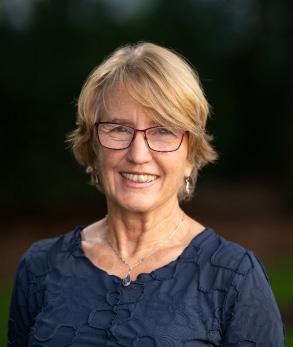
Hello from EARTH!
I hope this finds you all enjoying fall in your home ecosystem, wherever that may be. Here in Ann Arbor, the leaves are falling and the football crowds seem bigger than ever. I’m really excited about my second year as Chair and all the things we are accomplishing. I hope this newsletter gives you a feeling for the breadth and scope of EARTH's accomplishments! I’ve been sending quarterly email updates also—if you are not on our email list (or if you know someone who should be), please drop us a note. We want to make sure that our news reaches all, so we’ve sent it to you in both your inbox and mailbox. If you prefer one over the other, please let us know!
We are welcoming new faces on the faculty—Luke Weaver joined us this fall as a new Assistant Professor and Curator of Mammals at the Museum of Paleontology, and Jessica Fayne has transitioned from her Presidential Post-Doctoral/LSA Collegiate Fellowship to an Assistant Professor position. We are beyond thrilled to have them both on board! This year was a good one for carbonate isotope faculty: Sierra Petersen received tenure as a new Associate Professor, and Ben Passey was promoted to Professor. Dan Fisher and Ben van der Pluijm have officially retired and now hold Professor Emeritus status.
We’ve heard from alumni about how much they want to support our current students, and over the past year, we have made a special effort to identify ways to connect you. Our students deeply appreciate opportunities to learn from you! We know that with a degree from Michigan Earth, you can do great things—you are all living proof of that! Students value seeing where their degrees can lead them, and how they can tailor their time here in Ann Arbor to be ready for their next steps. We have set up channels for these connections, and you can read more about how to engage on the next page. Two in particular to look for—our LinkedIn group (University of Michigan EARTH-Geoscience Alumni) is growing fast with nearly 450 members, and we are setting up ways to interact through UCAN—the University Career Alumni Network.
A reminder that we are hosting events at major Earth science meetings this year. Professors Naomi Levin and Becky Lange joined EARTH alums at the Houston IMAGE meeting in late August, and a larger group met up in Anaheim for GSA. I look forward to the gathering at AGU—this year it’s in DC, and we’ll converge at the City Tap House on December 11. Please plan to join us if you are in the area! You’ll see an email with an opportunity to RSVP in the next month or so.
Plans for the final phase of Camp Davis renovations continue, with more and deeper conversations around what a new dining hall will look like. I can’t wait to share the details! But we’re planning more than a mess hall: If it’s been a while since you were at Camp, you may not realize how important the environmental science classes have become to our curriculum there. We teach one introductory and two upper-level ecosystem science classes every summer, and part of our Camp renovation will support that effort with a new lab classroom and related equipment to support our curricula in ecology, hydrology, and geochemistry. Experiential education like this sparks students’ imaginations and launches their careers.
In the pages that follow, you’ll read about the above and other exciting developments. We’re so proud of the work our students and faculty are doing, and relish the opportunity to bring them into closer contact with you. Please reach out if you have questions, ideas, or your own updates—we’d love to feature your work in an alum spotlight. Here’s to another exciting year filled with discoveries, achievements, and connections that make our community so special. Go Blue!
Warmly, Julie

We are excited to invite you to deepen your connection with EARTH! Whether you're a recent alum or a longtime supporter, there are several ways for you to get involved with our community.
We encourage you to join our department’s mailing list to stay up-to-date with the latest news, events, and research highlights. This is the best way to ensure you don’t miss any updates from the department.
We are also thrilled to announce the launch of our new LinkedIn group exclusively for EARTH alums. This platform is a fantastic opportunity to network, share experiences, and foster professional connections with fellow graduates. Join “ University of Michigan EARTH-Geoscience Alumni ” today and be part of this growing network!
Next, don't miss out on the EARTH’s University Career Alumni Network (UCAN) page. UCAN is a platform that helps U-M connect current students with alumni and for career guidance and

mentoring, including informational interviews, networking, and more. UCAN enables students to identify and reach out to alums who can provide insights on career preparation, job and internship search tips, and answer specific questions about various post-graduation paths. Your guidance helps students get an “on the ground” perspective on their career interests and potential job market.
Lastly, one of the most important ways you can get involved is by making a gift to EARTH . When you donate, you touch the lives of our students by enabling learning opportunities and empowering future scientists. There are many occasions to give throughout the year, including Giving Tuesday (December 3, 2024) and Giving Blueday in March. But you can give at any time by clicking here or visiting giving.umich.edu and typing Earth and Environmental Sciences into the search bar. Multiple funds will show up as search results, and you can select the one closest to your heart.
For more on these ways of connecting, please click here or visit the Alumni and Friends tab on our homepage .
Thank you to all of our fabulous alums, donors, and friends. We look forward to connecting with you this year and are grateful for all you have contributed in the past. Go Blue!
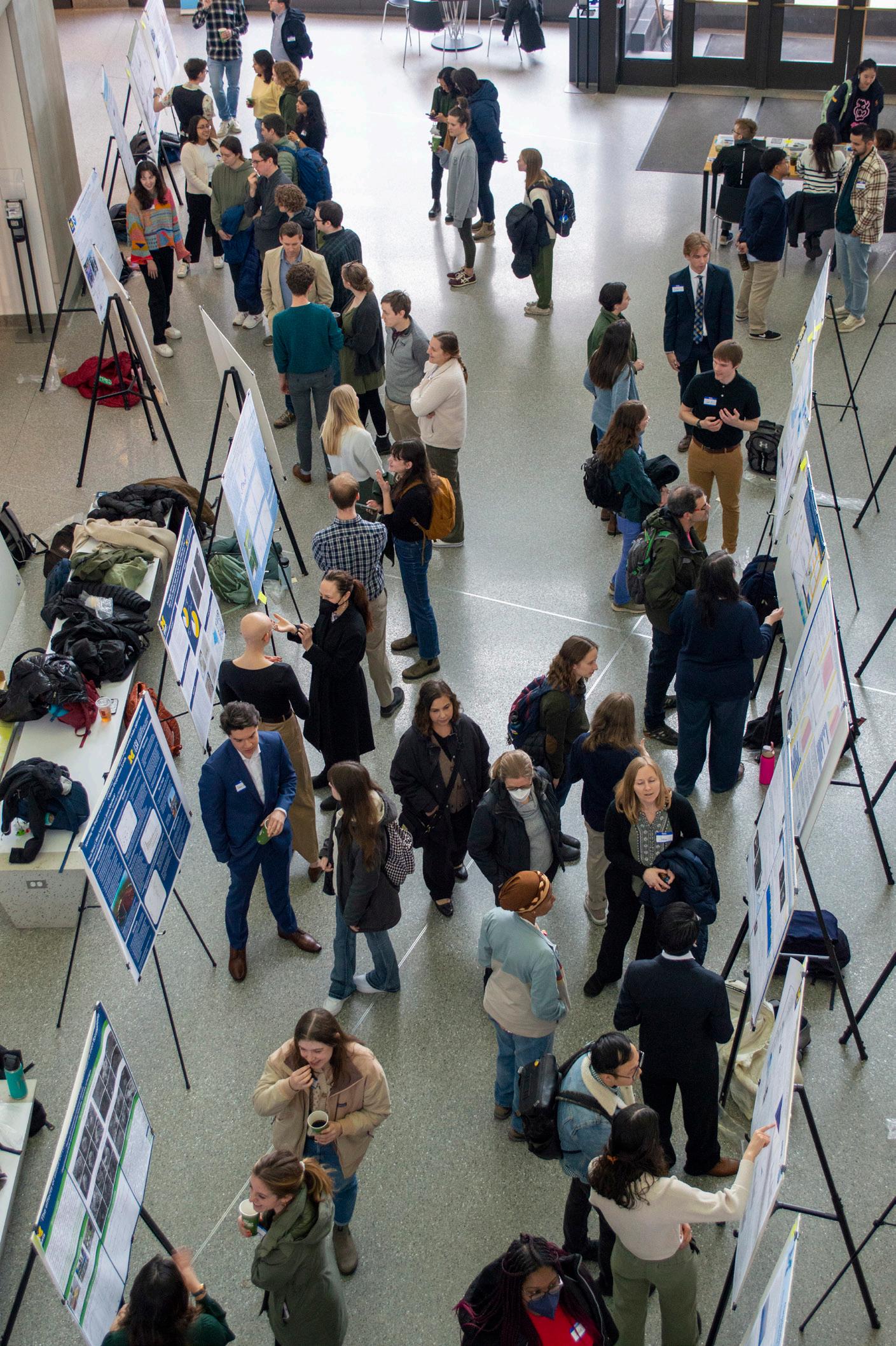
Mónica Carvalho and Selena Smith uncover flowering plants’ origins in the Southern Hemisphere
For paleobotanists Mónica Carvalho and Selena Smith, assistant and associate professors, respectively, in EARTH, the reality of spending January through March isolated on the Antarctic Peninsula set in when their ship set sail.
“I thought, ‘Okay, now it’s real,’” Smith said. “They left us on this rocky island for 40 days, in our tents, and it was actually a really fun time.”
Smith and Carvalho were there with an international, interdisciplinary team of scientists to paint a much-needed picture of Antarctica’s forests during the Cretaceous. During that period, Earth was in a greenhouse climate, and angiosperms—flowering plants—were beginning to take off. Today, angiosperms are the most diverse and abundant kind of plant. To understand their fates in an ever-changing climate, we need to understand how they survived and adapted in the past.
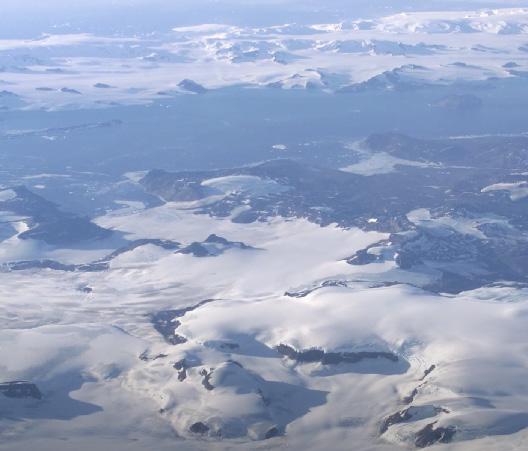
Fossil evidence from the Northern Hemisphere suggests angiosperms diversified rapidly during the Cretaceous, but much less research has been done on angiosperms in the Southern Hemisphere, due in part to its smaller land mass.
During the Cretaceous, Antarctica was at a similar latitude as today, and it was covered in lush rainforests. West Antarctica is one of the few places known to have fossil plant material from the Late Cretaceous, so it holds clues to Southern Hemisphere angiosperm evolution: What plants were there? How diverse were these forests? Do today’s Southern Hemisphere plants have roots in the Antarctic Peninsula?
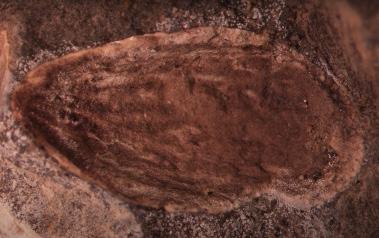
To find out, Smith, who is a co-PI with the University of Kansas’ Brian Atkinson, and Carvalho were sifting through ancient deltas on the Antarctic Peninsula, looking for concretions: brown, potato-esque rocks that may not look like much on the outside. But they preserved fruits and seeds exceptionally well.
“The level of detail that we can get is absolutely outstanding,” Carvalho said. “Seeds and fruits, preserved in 3D. And tissues of such high quality that we could see cell structures with a hand lens.”
Over six weeks, the team collected about 9,000 pounds of concretions and other samples, which finally arrived at the University of Kansas for processing in the middle of July 2024. It’s early, but the results seem promising.
“We’re in the initial stages of figuring out what we got,” Smith said. “But the early ones look just as we were hoping they would in the field.”
Smith brings her expertise with CT scanning of fruits and seeds and a familiarity with this mode of preservation, while Carvalho is an expert in Southern Hemisphere paleoecology and tropical angiosperms—a passion she attributed to growing up in lush Colombia. (“I grew up in Alberta,” Smith
added. “Not very lush.”)
Together with the rest of the team, they’ll reconstruct Antarctica’s dense Cretaceous forests, one concretion at a time.
All five Great Lakes now have harmful algal blooms. Warmer summer temperatures give the blooms longer lifespans, and toxins are going airborne. A new Michigan center, with Gregory Dick as director, will tackle this and more
Environmental microbiologist Professor Gregory Dick has been studying harmful algal blooms (HABs), which infamously turn Lake Erie into a toxic green pea soup each summer. Since 2014, when HABs caused a drinking water crisis in Toledo, Ohio, public awareness, safety policies, and research around the blooms have all increased.
But so, too, have the blooms. And their health impacts remain largely unknown.
“One of the main breakthroughs has been learning that these toxins can aerosolize and get transported for kilometers in the air,” Dick said. “There may be a greater risk from inhalation than drinking. We need more laboratory studies because the risks really remain unknown. But it’s concerning that coastal communities could be impacted by this without ever being in the water or drinking it.”
Toxin aerosolization and human health impacts will be one of the main research areas for the Great Lakes Center for Fresh Waters and Human Health, which in 2024 moved to Ann Arbor from Bowling Green State University with $6.5 million in new funding. Dick will serve as the center’s director.
The interdisciplinary center will also explore how climate change is affecting HABs and different toxins, discover new toxins, read the genomes of toxin-producing bacteria, and study how toxins impact people. Dick’s work falls in the areas of toxin, genome, and climate, but he is eager to work with health science researchers through his new role. Collaborators at the center are already working with local health departments and enrolling participants in health studies.
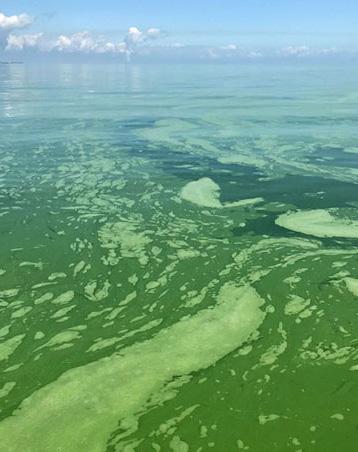
Working closely with Great Lakes communities will be key, both for public safety and for data collection, Dick said.
“There’s anecdotal evidence out there from the fishing industry, for instance,” Dick said. “They talk about the ‘August cough,’ where fishers who are out on the water during blooms are getting respiratory issues.” Information like that can help researchers know where and when to look for issues.
Dick tempers his optimism. Despite knowing for years that excess nutrients from agriculture drive blooms in Lake Erie, there’s been little measurable improvement on that front, he said. “The root cause has not been addressed,” he said—that falls to the legislature. “We’re conducting the research that would inform policymakers.”
There is good news, Dick said. Since the 2014 drinking water crisis in Toledo, health officials and communities are better prepared to respond to blooms. “Odds are good that nothing like that will happen in Toledo again,” he said.
Matt Friedman wants to know why fishes are the way they are, and why they inhabit the places they do
Professor Matt Friedman, when relaying how his colleagues described him, said with a laugh: “I’m the guy who studies weird fishes.” His favorite fish changes day to day, but on this day, it was the “very obscure” Tegeolepis—a meter-long, ray-finned, open-ocean predatory fish from the Devonian.
It was weird fishes like Tegeolepis that sparked Friedman’s interest in paleontology.
“Museums have a special place for me,” Friedman said. “Growing up near Cleveland, the museum had an amazing menagerie of ancient fishes—giant armored placoderms, sharks preserved with soft tissues, stuff that looked very alien. And I thought they were all cool, in part because they’re so different from what’s around today.”
As a paleontologist, Friedman is interested in using the evolution, biodiversity, and biogeography of fish of the past to better understand the fishes of the present—and of the future, in their responses to climate change. His research has migrated up and down the stratigraphic column and around the globe. And his lab is a busy place these days with a slew of projects led (he’s quick to specify) by his students.
These days, Friedman is particularly intrigued by fossils with soft tissue preserved, which painstaking scanning efforts have revealed. “In doing this non-destructive sampling, we’ve found a whole new kind of information that we’ve not really had in fishes before,” Friedman said. “Soft tissues are providing us with powerful new lines of evidence about anatomy, which in turn tells us about animals’ ecologies.”
Using soft body parts to understand ancient fishes’ relationships with their environment in turn sheds light on what drove biodiversity in the past. That new information is particularly important for the tropics, where today fish have the greatest biodiversity, but the fossil record is lacking, particularly in the Cenozoic.

That dearth of fossils resulting in “really poor understanding” of tropical diversity is due in part to the Northern Hemisphere bias many fossil collections have, with most samples coming from North America and Europe, Friedman said. With work and local collaborators in places such as Egypt and Pakistan, which had “remarkable” biodiversity during the Cenozoic, he and his students are working to fill in those critical spatial gaps.
It’s a bias he’s keenly aware of in his role as director and curator of the Museum of Paleontology at the University of Michigan.
“Paleontology, and our fossil records, are historically built upon fossils from Europe and North America, which means we’ve been looking at an incomplete record, through a distorted lens,” Friedman said. “So it’s really important to recognize that, and to collaborate with and support our colleagues around the globe who are working to address that imbalance. Having these new perspectives will fundamentally change our understanding of the patterns we see in the fossil record.”
Naomi Levin breaks down research silos and brings a career-long goal to fruition
Researchers working on early hominin fossils can be protective of their sites, at times infamously so. While working in isolation may have sufficed in the last century, forging new collaborations is now necessary to make cutting-edge progress toward understanding humans’ roots, according to Professor Naomi Levin.
Levin, a geochemist, has worked for more than two decades reconstructing paleoenvironments of East Africa, where early hominin fossils, including the famous Australopithecus afarensis skeleton nicknamed “Lucy,” were found. There, research teams working on sites just tens of miles apart, finding different species, have not historically collaborated. That has left significant gaps in our understanding of human evolution.
“Silos limit science,” Levin said. “People are starting to realize that.”
Levin is part of an international team, funded by a W.M. Keck Foundation grant, studying two sites in Ethiopia: Hadar and Woranso-Mille. The sites are about 30 kilometers and tens to hundreds of thousands of years apart, but their fossil records are nothing alike. Hadar (3.18 Ma) is where Lucy was found in 1974. Scientists then searched through thousands of fossils from the locality and didn’t find another species. “Afarensis was the only game in town,” Levin said.
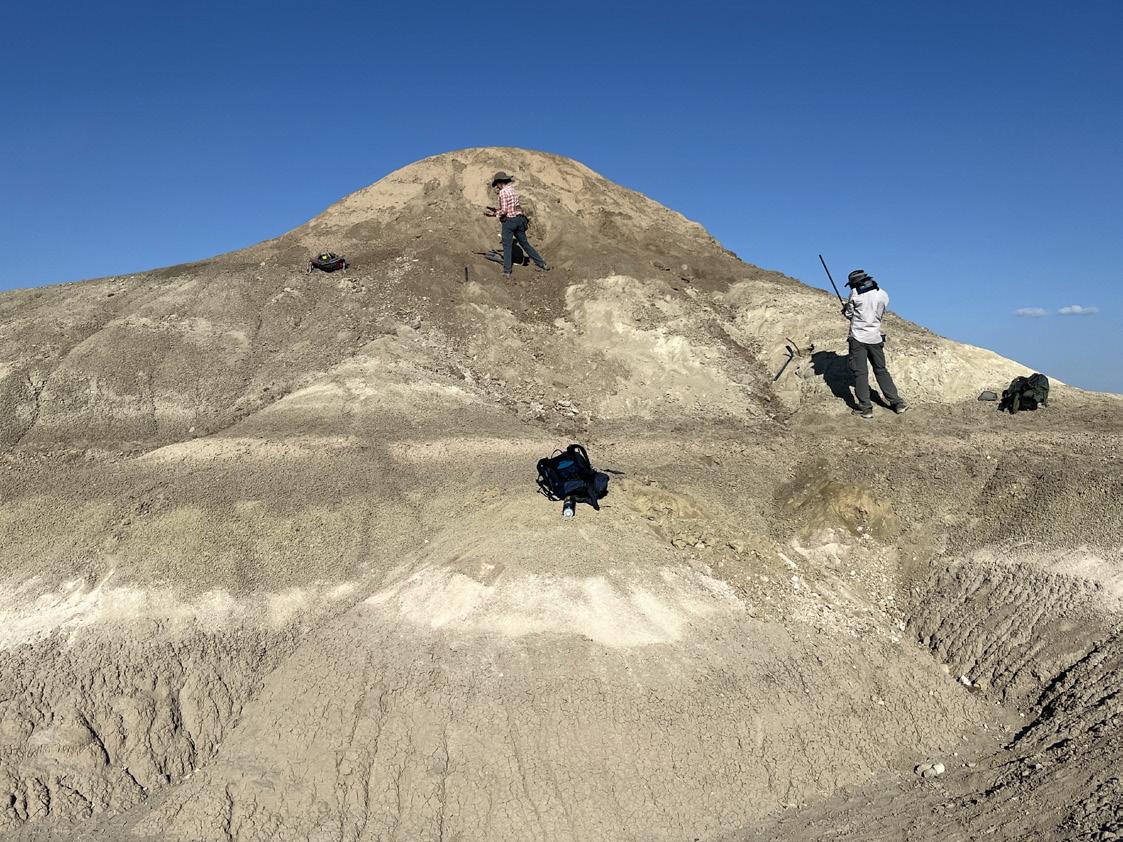
In 2012 Levin’s collaborator, Yohannes HaileSelassie, found what looked like an opposable toe at Woranso-Mille—a different species, just 18 miles away. They eventually unearthed more species at the site, including the first skull of A. anamensis. The question was how two sites, relatively close in space and time, could host such different fossil assemblages.
“To answer that, we needed two teams,” Levin said—one at each site, working in tandem with the other. “We have broad trends in the story of human evolution and climate, but now, we’re at a point in the science where we have to roll up our sleeves and look at the details.”
Levin and her PhD student, Million Mengesha, spent two weeks in early 2024 working at Hadar, sampling paleosol carbonates and fossil teeth to be used for carbon and oxygen isotope analyses, and sediments for petrographic and provenance analyses. One of Levin’s main contributions to the effort is her cutting-edge work on using the oxygen triple isotope system to reconstruct aridity, a critical part of a site’s paleoenvironment. She and Mengesha will focus on those while collaborators work on phytoliths and biomarkers.
Her working hypothesis is that Woranso-Mille could have been closer to or in a basin, creating a more arid environment and driving different evolutionary adaptations. Teasing out the answer will require slow, careful work, but it’s a job Levin is eager to take on, having been working toward it for decades.
“I’m circling back to something I’ve always wanted to do,” Levin said. “It’s the most satisfying thing ever.”
The project has also begun establishing ways to collaborate with Ethiopian scientists and recruit students from East Africa, Levin said. “I’m really excited about the opportunities to build pathways for formal training,” she said. “Funding has been a limitation, but it’s really important work.”
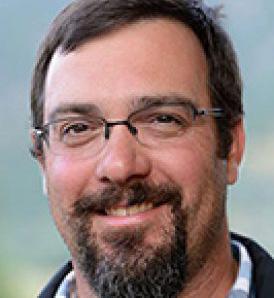
Nathan Niemi was appointed Henry Pollack Professor, so named in honor of professor emeritus Henry Pollack, who continues to collaborate with the department. Niemi has also been named PresidentElect of the Geological Society of America for the 2025 fiscal year. He will serve as Acting President starting January 1, 2025, transitioning to the role of President on July 1, 2025. He will serve until June 30, 2026.
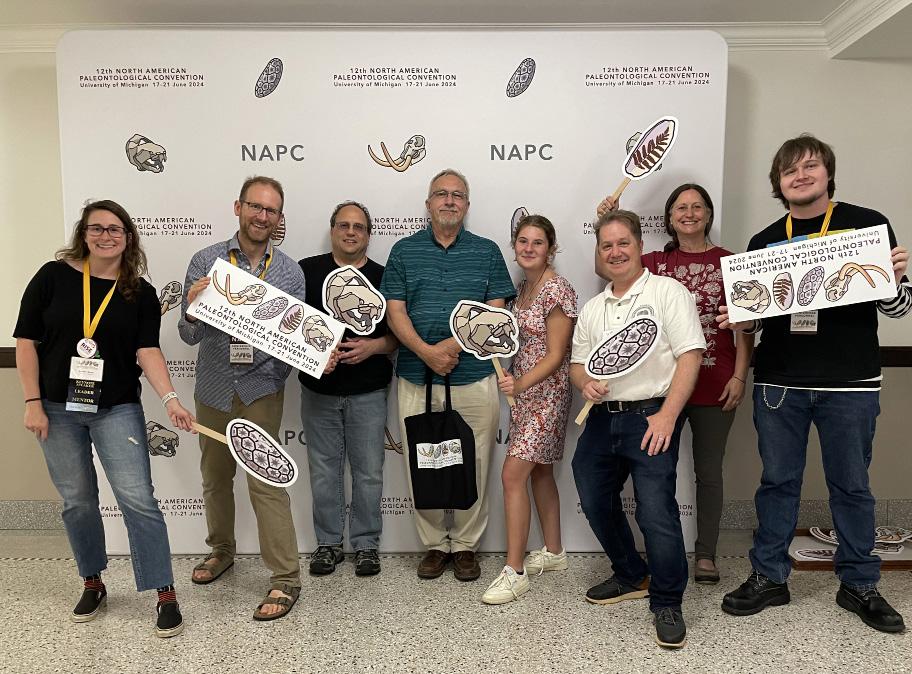
Our friends in the U-M Museum of Paleontology hosted the 12th North American Paleontological Convention, attracting over 800 delegates from around the world. The event featured a plenary, numerous sessions, workshops, and regional field trips. The convention's success was due in large part to the dedication of the organizers and participants. The next convention will be in 2028 at the University of Tennessee, Knoxville.

Executive Coordinator
Carla Huhn won the 2024 Kay Beattie Outstanding Individual Award. This award is presented to an exceptional employee with more than three years of service at the university who contributes beyond the ordinary fulfillment of duties and takes on increasing levels of responsibility.
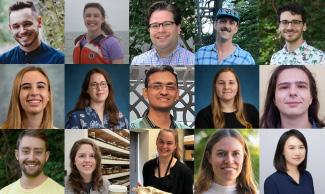
We have welcomed many new department members, including Student Services Coordinator Jim Hoppes, Outreach Coordinator
Nicole Rappuhn, Academic Program Manager Nathan Sadowsky, and postdoctoral fellows Matthew Allen, James Andrews, Charlotte Connop, Axelle Gardin, Siva Heramb Peddada, Sarah Katz, Hugo Plombat, Ethan Shirley, Emily Troyer, Anna Wisniewski, Annabel Wolf, and Chu-Fan Yang.
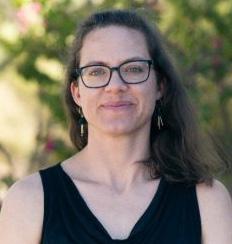
Sierra Petersen was promoted from assistant professor to associate professor with tenure. This promotion highlights Petersen’s scholarly excellence and her influential role in the scholarly community, including research in paleoclimatology, isotope geochemistry, and paleoceanography, focusing on how past climate changes are recorded in marine carbonates and other geological proxies.
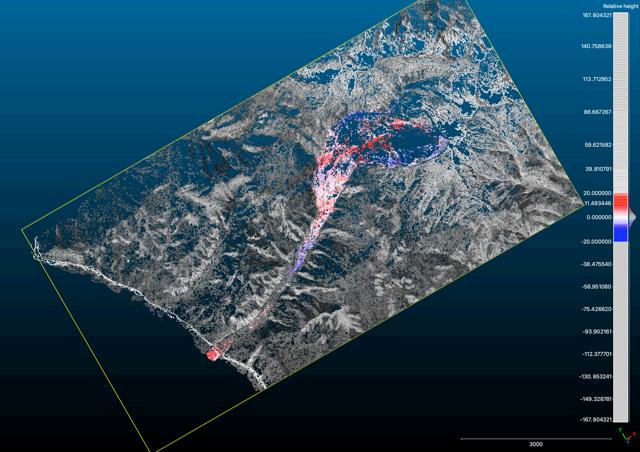
EARTH has launched a new Geospatial Science minor
This minor focuses on the intersection of the natural sciences, information technology, and society, and prepares students for positions in climate change mitigation and adaptation, sustainability of natural resources, disaster response, urban planning, energy production, carbon capture and storage, environmental protection, and more.

Benjamin Passey was promoted from associate professor to professor. Passey was also elected as a Fellow of the Geological Society of America. Passey’s promotion and election recognize his significant impact on the field through his dedication to research on stable isotopes in areas such as paleoecology, paleoclimatology, and diagenesis.
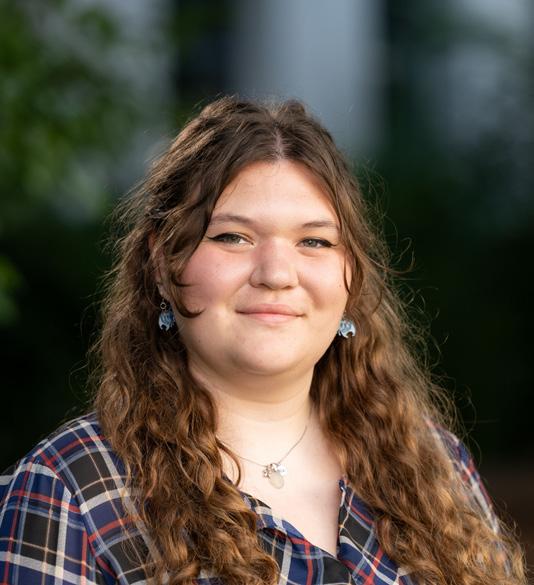
Incoming graduate student
Abigail Reed was named a fellow in the NSF Graduate Research Fellowship Program. The program aims to enhance the quality, vitality, and diversity of the American scientific and engineering workforce. It seeks to broaden participation in STEM by supporting a diverse range of talents. Abigail will use her fellowship to explore the role of nitrogen biogeochemistry in Lake Erie's cyanobacterial blooms.

Jonathan Overpeck was elected to the National Academy of Sciences. Overpeck is a climate scientist with over 230 publications and 60,000 citations. He champions impactful public higher education and emphasizes diversity, equity, and inclusion. Active in promoting a sustainable, just economy, he seeks to tackle climate and environmental crises.
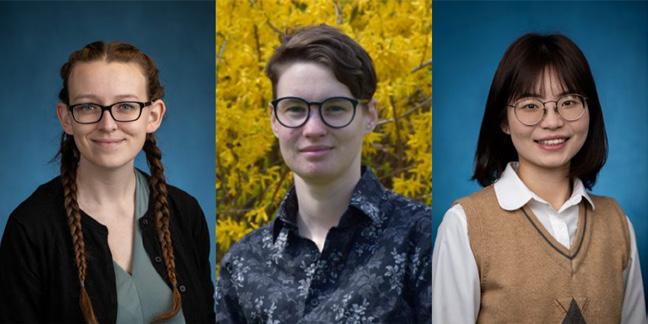
Sydney Gable, Cecilia Howard, and Xue Su all received Rackham Predoctoral Fellowships. These fellowships are awarded to doctoral candidates completing exceptional dissertations, based on the quality of their early research accomplishments, program perspectives, faculty recommendations, and excellence in teaching or professional leadership.
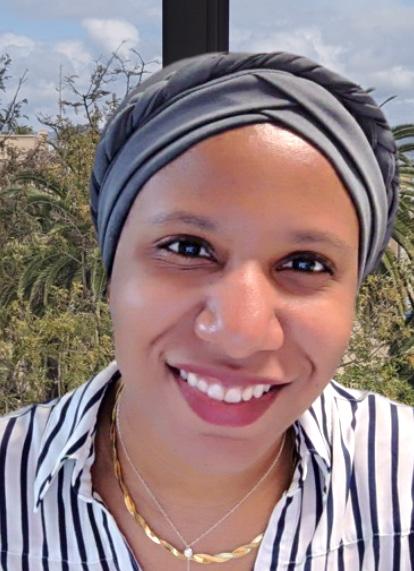
“There’s a satellite for that!”
Jessica Fayne uses her experience in hydrology, remote sensing, and spatial data to explain how natural hazards and climate change interact
Watching a tsunami devastate Java in 2006 sent Jessica Fayne, who began her role as an assistant professor in EARTH on September 1, on the path to Earth sciences. Remote sensing, with its versatility and accessibility, appealed to her: So many types of data from all around the world were publicly available, just waiting for her to explore. During her PhD at UCLA, she forged complementary skillsets in hydrology, remote sensing, and spatial data analysis, with the aim to improve how we predict and measure the impacts of climate change and natural hazards.
Fayne’s research at U-M ranges from wildfire susceptibility and terrestrial water storage to landslide and flood mapping and prediction. She’s also working on radar sensitivity to wind and wet vegetation. These are interdisciplinary problems requiring interdisciplinary responses, and Fayne brings remote sensing expertise to them all.
“There are so many satellites, and every time you learn to speak the language of a new satellite, you open the door to working with a whole new set of people,” Fayne said. “Whatever you can think of, there’s a satellite for that!”
Fayne is looking forward to teaching EARTH 408: Introduction to GIS in the Earth Sciences this fall as well as developing a new class in remote sensing. “These tools are so versatile and translatable,” she said. “We need a new generation who really knows this stuff.”
Tracing mammals’ dominance through time
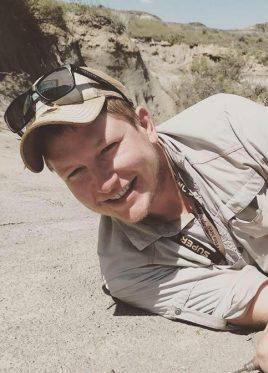
Luke Weaver wants to know how and why mammals came to be “the most prominent players” in terrestrial ecosystems today
Today, paleontologist Luke Weaver researches mammalian biodiversity in the fossil record. But he started out wondering about human evolution.
“I wanted to know what makes us human,” Weaver said. “Then, what makes a primate? Ultimately, I got to, ‘what makes a mammal a mammal?’ I’ve been pulled further and further back in evolutionary history. There’s just something fascinating about understanding the roots, of what makes us, us.”
Weaver, an assistant professor in EARTH and assistant curator at the U-M Museum of Paleontology, uses the fossil record to understand how mammals came to dominate the world, from biodiversity and evolutionary perspectives: how diverse they were, what they were doing when they were alive, and how external factors like climate and tectonics shaped mammals’ trajectories. He’s particularly interested in reconstructing how placental versus marsupial reproduction arose.
Doing this work at U-M is “an absolute dream job,” Weaver said.
“At EARTH, the hardest thing is to find people I don’t have a potential collaboration with,” Weaver said. “It’s one of, if not the, best places for anyone who’s paleo-interested.”
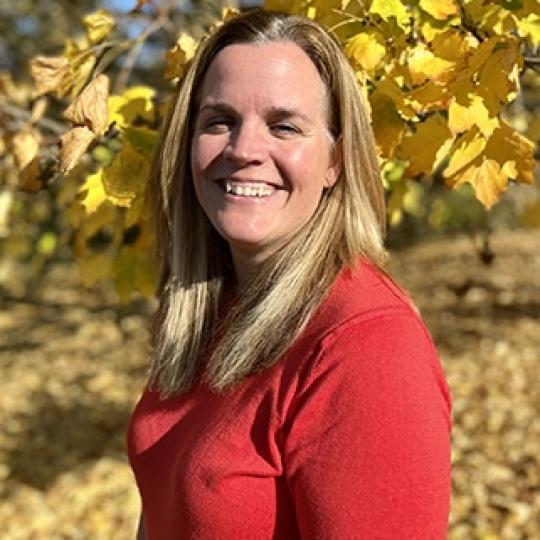
Earlier this year I was humbled and honored to be selected as the new Alumni Advisory Board (AAB) chair. I initially joined the AAB over five years ago and have been amazed by its commitment to helping the Department of Earth and Environmental Sciences promote education and scientific discovery about the entire Earth - a mission and partnership that I plan to uphold.
As the new AAB chair, my main priority is to continue fortifying and enhancing our student-alumni outreach. I personally believe there is no experience quite as formative and inspiring as being an EARTH student and hope that all alumni will consider investing in the department’s next generation of professionals and academics.
Another priority is to provide valuable support to the department that enriches the learning experience for current and future students. Specifically, ensuring that the department has the resources it needs to thrive.
Lastly, I am happy to share that we have a few new alumni events and student engagement initiatives currently in motion. Of note, the AAB and the department are planning to host a few alumni social gathering events across the country throughout the year. If you are interested in supporting or have any thoughts on suitable locations for such an event, please feel free to reach out.
In addition to the alumni events, we will begin utilizing the University Career Alumni Network platform designed to facilitate and hopefully strengthen our student-alumni connection. As alums, we are able to provide unique insights that complement the department’s academic offerings. The AAB members and I encourage all past department alums to consider joining UCAN in an effort to broaden and diversify our professional areas of real-world experiences and interests. Stay tuned for further developments!
Go Blue, Jessica Bleha

Joel Blum will retire in June 2025. Born in Cleveland in 1960, Blum earned a BA from Case Western Reserve, an MS from the University of Alaska, Fairbanks, and a PhD from California Institute of Technology. He began his academic career at Dartmouth College, later joining U-M in 1999 as the John D. MacArthur Professor.
Blum chaired the department from 2000-2006 and has several named professorships including the aforementioned John D. MacArthur, Arthur F. Thurnau, and Gerald J. Keeler Distinguished Professorships. Blum’s research focuses on mercury chemistry and isotope geochemistry. Blum’s work has greatly enhanced our understanding of environmental systems.
Blum has received numerous accolades, including the Clair C. Patterson Award in 2013 from the Geochemical Society. His research has been recognized by the Sloan Foundation, the National Science Foundation, Case Western Reserve University, and the University of Alaska, Fairbanks. Blum is a fellow of myriad scientific professional societies and was elected to the National Academy of Sciences in 2020. Blum’s impressive publication record includes over 200 research publications and more than 12,000 citations.
Blum will spend his final pre-retirement year wrapping up an NSF grant, synthesizing data, and writing articles. In retirement, Blum will remain in his position as the editorin-chief of the American Chemical Society journal Earth and Space Chemistry.
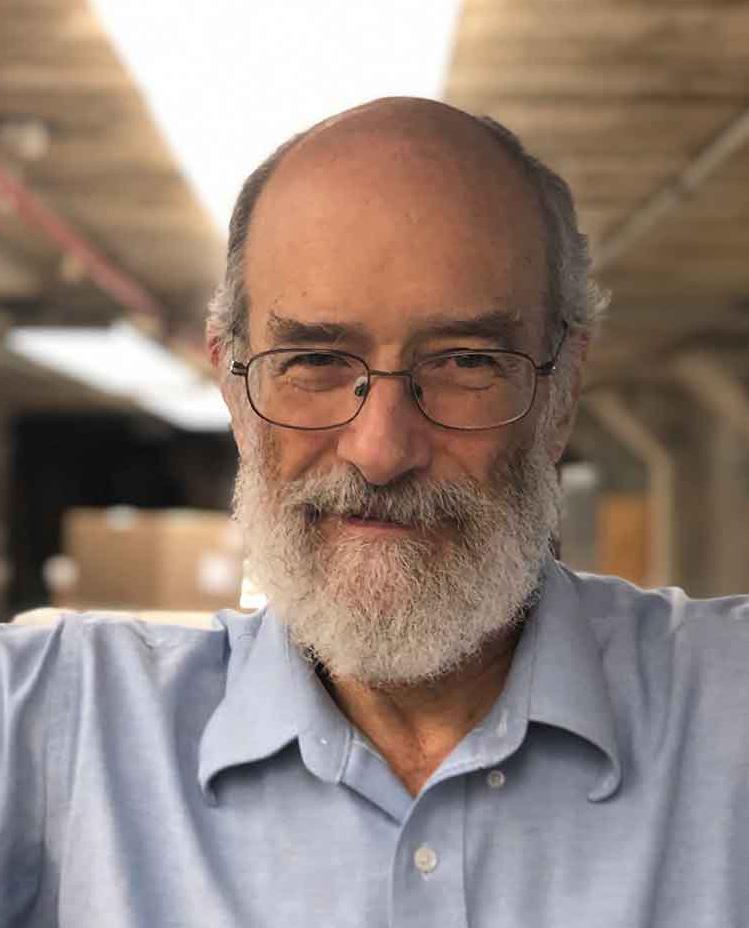
After 44 years at U-M, Daniel Fisher retired in December 2023. He received his PhD in Geological Sciences from Harvard University in 1975 and served as the Claude W. Hibbard Collegiate Professor of Paleontology and the Director of the U-M Museum of Paleontology.
Fisher employs a multidisciplinary approach in his work, integrating geochemistry, biomechanics, and modeling to reconstruct the lives and habitats of extinct species. Fisher’s groundbreaking research, primarily on the extinction of Ice Age mammals, earned him fellowships in the Paleontology Society and the American Association for the Advancement of Science and a senior fellowship in the Michigan Society of Fellows. Fisher is also a recipient of the Governor’s Award for Historic Preservation and the Schuchert Award.
Since retiring, Fisher helped organize the 12th North American Paleontological Convention and was honored by his colleagues with a symposium celebrating 50 years of collaboration. He plans to continue researching Pleistocene proboscideans, revisit older work, and spend time with his family.
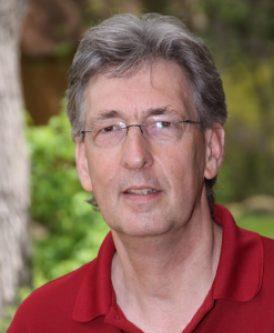
After nearly 40 years at U-M, Ben van der Pluijm retired in June 2023. He received his PhD from the University of New Brunswick in 1984 and served the department as the Bruce R. Clark Collegiate Professor of Geology.
Van der Pluijm's research areas include structural geology and tectonics, along with hazards geology and societal resilience. He founded the Global Change Program at U-M and was the founding editor of the journal Earth’s Future. Van der Pluijm is a fellow of the Geological Society of America, the Geological Association of Canada, and the American Association for the Advancement of Science. He is a recipient of the Director’s Award for Collaborative Integration from NSF and the GSA Distinguished Service Award.
Since retiring, van der Pluijm and his wife moved from Ann Arbor to Boston, where he spent his sabbatical at MIT finalizing projects. He plans to continue doing research, particularly on the geologic history of the Appalachians, and continue a project that utilizes Google Earth for virtual field trips. He is considering writing on “societal resilience to environmental change.”
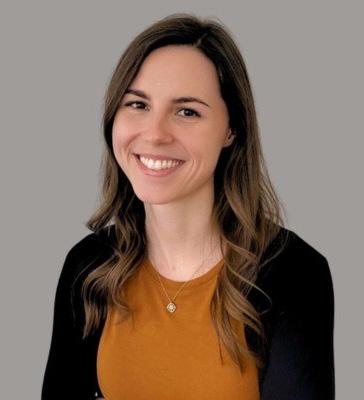
Megan Krajewski (BS, 2016) is a senior GIS analyst at Cloudpoint Geospatial. Her interest in GIS was first piqued by EARTH’s Intro to GIS class, which she followed up with the graduate-level GIS course. “I liked that it has a creative side,” Krajewski said. “It’s data-driven, but at the end of a project, you have a nice-looking map that can help people make clear decisions. It’s at a good intersection of data and visual art.”
After graduating, Krajewski started in environmental consulting before moving to energy consulting, where she used her GIS chops to locate the best sites for new renewable energy projects. In 2024, she moved to Cloudpoint, where she creates public-facing maps of all sorts for Chicagoland municipal governments. “It’s cool to impact local change,” Krajewski said.
From her eight years of experience in the field, she thinks students who come out of their undergraduate degree with strong GIS skills are well-positioned for jobs. “The more experience you have, the better!” she said.

Marlon Ramos (PhD, 2021) is a research geophysicist working at Sandia National Laboratories. In his freshman year at the University of Nevada-Reno, he happened to wander through the geology building and spotted a poster about the Loma Prieta earthquake. He was instantly intrigued by the seismic imaging it showed and soon after signed up to major in geophysics, focusing on applied seismology. “That was my first semester, and I never looked back,” he recalled. He continued expanding his skillset during an MS at Boise State, imaging the Kodiak Fault, before coming to U-M to study subduction zones with Associate Professor Yihe Huang.
An internship with the Air Force Research Lab during his PhD sparked his interest in the crossover between seismology, geophysical modeling, and national security. After he graduated in 2021, Ramos joined Sandia, where he works on—among other projects—using seismic signals to detect and differentiate between earthquakes, collapses, and nuclear and other types of explosions. He is also involved in K-12 STEM outreach around the Southwest.
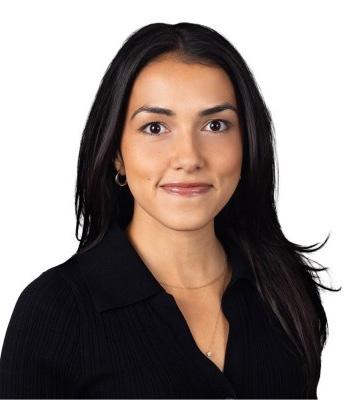
Cristina Shoffner (BS, 2016) works on energy policy and advocacy for Breakthrough Energy, a group of organizations working to innovate and scale up nextgenerational energy technologies. Having grown up in the Washington, D.C., area, she knew she wanted to pursue energy and environmental policies. She paired her Earth and Environmental Science major with business and communications coursework and, after graduating in 2016, landed a summer internship, and then a job, with the Obama administration’s White House Council for Environmental Quality. She then moved to the Senate, where she worked for four years with Michigan Senator Debbie Stabenow’s energy and environment team, translating science into policy for Michigan and the country.
In 2021, she joined Breakthrough Energy, where she has continued her work converting scientific research into actionable policies for sustainable energy.
For both the White House and Senate roles, her U-M education was key, Shoffner said. “I think that helped me get in the door, especially the familiarity with climate change the EARTH degree gave me.”
It’s hard to believe that we're marking 95 years since the founding of Camp Davis. It’s amazing to reflect on what has changed—we have new faculty and student cabins, we jump on high-speed internet, and the kitchen now orders remarkably less salt pork than it did in the 1940s—and what has stayed the same—the awe that is inspired by a clear view of the Tetons, camaraderie around the fire pit in the evenings, and our dining hall and some classroom buildings. As we look toward a second century of field education at Camp Davis, it’s worth reflecting on the importance of Camp Davis to Earth and environmental science education in our department and the need to continue to provide experiential learning opportunities for our students, and especially to have these experiences by led by faculty and instructors from our department. The diversity of field courses we offer at Camp Davis, and the engagement of our faculty in Camp Davis instruction, could not better encapsulate our mission at Camp Davis to be the Leaders and Best. But big milestones also offer an opportunity to consider change.
Few faculty remember the last frosty summer morning at camp. Dealing with wildfire smoke has become routine, and water quality and scarcity are front and center among concerns around Jackson. Over the past few years, the department has been considering how to address the challenges of century-old infrastructure at Camp Davis, while also providing the resources and facilities to provide world-class experiential education in Earth and environmental sciences that addresses some of society’s most pressing challenges. This summer, we kicked off a multi-year project to re-envision the core of the Camp Davis campus for another century of field instruction. The project encompasses a new dining hall and, by better utilizing our existing footprint, a new classroom building with wet lab space for environmental and climate science instruction. While the essential dining hall comprises the majority of the project, these buildings will be connected by a large outdoor instructional and gathering space that connects to our existing classroom buildings, offering an important space for informal collaboration and connection. You will hear more about this project in the months ahead, and our plans to culminate the project with a Camp Davis centennial celebration. We hope that you will join in our excitement and commitment to strengthening Camp Davis for another century “to excel!”
We invite you to join us by supporting the renovations to the Camp Davis mess hall. For more information, contact Janel Alpert (alpertj@umich.edu) or Julie Cole (earth-chair@umich.edu).

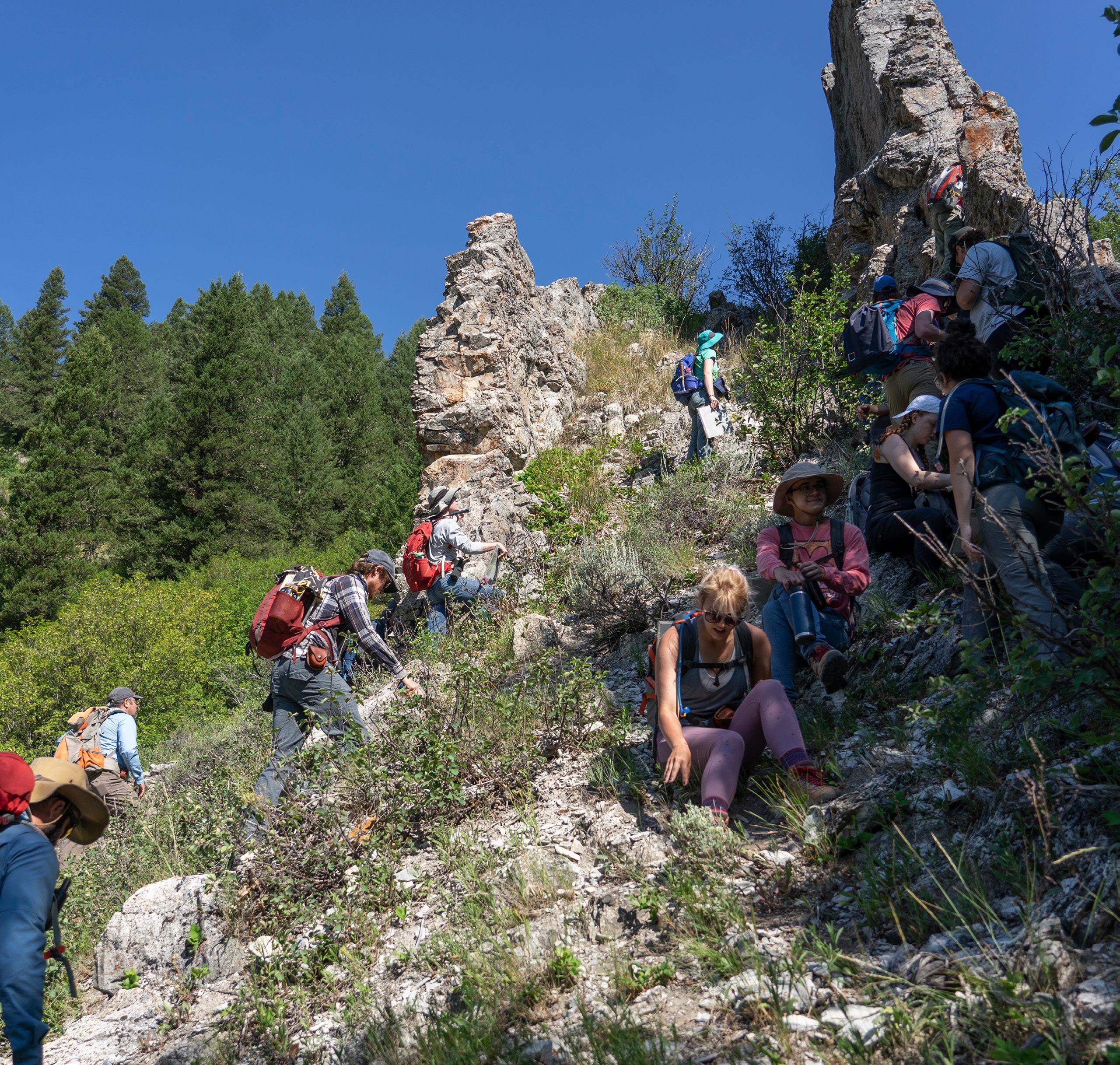
EARTH is doubling down on our commitment to reach those not often exposed to the geosciences, deploying department resources and person-power to get young people directly engaged in learning
Earth Camp, now in its 11th year, has introduced more than 200 high school students to geoscience. What started as a one-time, weeklong trip has evolved into a three-year program, with many high school students attending for the summers following their sophomore through senior years. A few have come full circle and worked with the program as EARTH undergraduates.
Each summer, Earth Camp students, recruited from U-M’s college prep program, Wolverine Pathways, spend a week exploring nature and learning about Earth and environmental science. Their first trip is Sleeping Bear Dunes, and the second is Michigan’s Upper Peninsula. The third, Jackson Hole, Wyoming, “just blows them away,” said outgoing outreach coordinator Jenna Munson, who started the program in 2013. Munson is in the process of shifting her full-time effort to lecturing, and incoming outreach coordinator Nicole Rappuhn will take on Earth Camp instruction starting in summer 2025.
Munson is pleased with how the program has grown. “There’s definitely word-ofmouth now with the Wolverine Pathways students,” she said. “It’s so wonderful to have ninth graders who heard about Earth Camp even earlier saying, ‘Oh my gosh, I heard we get to go to Wyoming!’”
Early on, that excitement to explore is what Munson realized the program was fostering, as much as an interest in the science. Earth Camp also builds students’ confidence so “they come to U-M ready to ask questions and go to office hours, knowing that the professors just want to see them succeed,” Munson said. “It takes away that intimidation factor.”

Earth Campers’ opportunity to stay at Camp Davis and experience a field station first-hand helps demystify an intimidating experience before students embark on undergrad, leveraging their enthusiasm. The experience, Munson said, was excellent. “They’re an amazing group, always up for trying things—even if it means a steep hike in 80 degrees,” she said. Improvements to Camp Davis facilities will benefit Earth Camp students, too, with new labs and more space for dinnertime discussions.
A newer effort, which just finished its third year, is Associate Professor Selena Smith’s Earth-RISE program to get local high school students from historically disadvantaged groups research experience in labs. That’s crucial for getting students familiar with science, building confidence, and gaining experience for applying to college, Smith said.
“I got my start in research in high school, and that was a really important experience,” Smith said. “My university experience would have been very different if I hadn’t had that experience, and that confidence,

to then keep doing research as an undergrad—especially as a first-gen student.”
She’s recruited cohorts of three, four, and five students, respectively, each year from Earth Camp and Wolverine Pathways. The students spend six weeks in EARTH labs, taking on approachable lab projects. They also meet with different researchers, receive mentorship on attending college, and get trained in science communication through the U-M Museum of Natural History.
The three-year program was funded by an NSF grant, so Smith is looking for new ways to keep the program running.
“We’ve made some good strides around opportunities not only for high schoolers but for undergrads too,” Smith said. “We have a lot of grad students and faculty who are cognizant of the need to create and maintain these efforts, and so far, we’ve been successful.”
Pathways to research have included undergraduates, too. As the number of EARTH majors has increased, so too has the demand for undergraduate research opportunities. While the overall number of faculty and labs in the department hasn’t grown, we’ve dramatically increased the number of undergrads engaging directly with research. Our faculty and technical staff continue to find innovative methods for doing more with our existing resources, inspired by the opportunity to develop fledgling scientists.
This fall, Associate Professor Sierra Petersen will lead a course that centers on lab-based research. It will build off her experience with cohorts of undergraduate researchers in her own lab, as well as the wider Undergraduate Research Opportunity Program. The cohort model generated a positive dynamic in the lab, and she hopes to replicate that in the course.
“We had to come up with a way to provide more undergrad research experiences,” Petersen said. “It’s a transformation in the department to meet a need.”
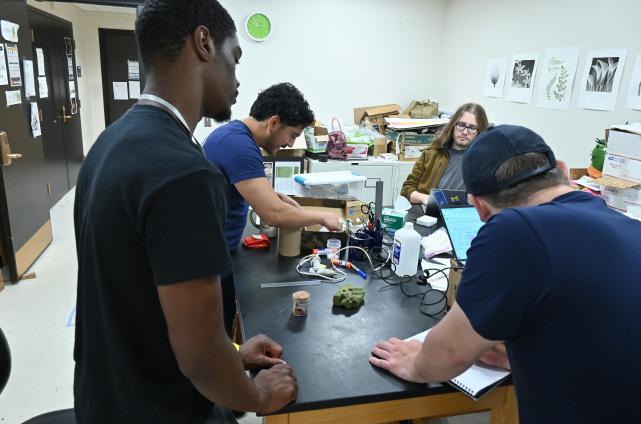
Petersen will host 15 students for the semester; each will have their own project. They’ll then be able to present their work at the annual Michigan Geophysical Union meeting or new department symposium, which we launched in spring 2024. Freshmen to seniors presented their work in a supportive environment, making it feel more accessible and less intimidating to students with a limited background in formal academic presentations.
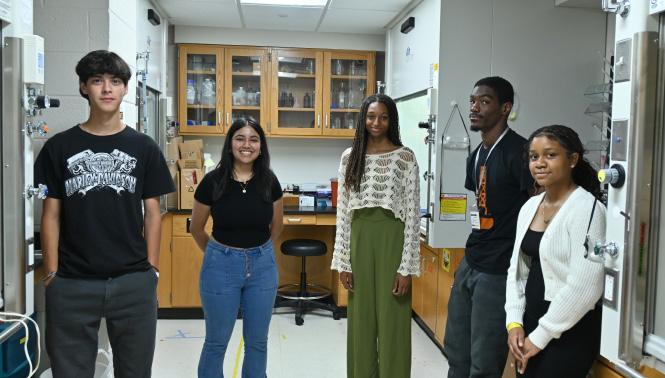
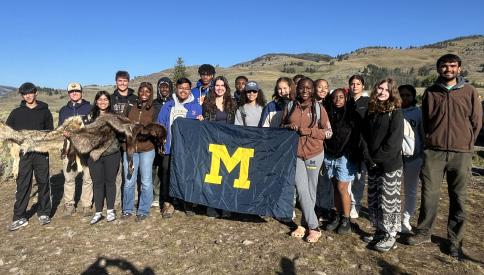
“It’s all about building connections for students and seeing where they fit into research at EARTH,” said Research Laboratory Specialist Sara Rivera, who organized the symposium. “It’s about breaking down barriers to entry and making it as easy as possible for students to get experience presenting.”
“And,” she added, “it’s just a great way to celebrate all your hard work at the end of the year.”


Michela Arnaboldi and Kacey Lohmann co-led the long-running trip from May 6-16, with Peter Knoop joining as the longtime GIS specialist
Professor Kacey Lohmann has been running “the Florida field trip” since 1982. While many of the stops have stayed the same—taking in the Appalachian fold and thrust belt, checking out karst in the Everglades, snorkeling in Key Largo—Florida has changed.
“Sea level is rising,” Lohmann said. “We’re seeing that with flooding. With all the new construction that’s occurring, all the buildings are on stilts. And a lot of beach houses not on stilts are for sale.”
Warming and acidifying waters have taken their toll on the reefs, which “in the ‘70s and ‘80s were spectacular, luxuriant reefs,” Lohmann said. “Climate change is decimating them.”
Over the years, students have become more interested in discussing these impacts, and Lohmann has shaped the trip accordingly.
“I use this as a point to start talking about how, in addition to the geological phenomena we’re looking at, we can see real-time environmental changes and societal responses to that change,” Lohmann said. “And I have pictures of the reefs from the 70s, so I can show the students what they used to look like.”
Teaching professor and oceanographer Michela Arnaboldi, who co-led the trip this year 23 years after going as a graduate student, echoed that students are eager to learn about our changing oceans. She was happy to bring that expertise to the trip this year.
“Learning about oceanography is a little bit limited in Michigan,” she said, with good humor. “I’m an oceanographer—we go to the beach! With students in Florida, we’re surrounded by water and visiting different kinds of beaches where these processes are actually happening. Students are very interested in and in tune with these issues around climate change.”
The trip serves as important context for understanding modern climate change and sea-level rise. Driving from Indiana to Florida,
students move through time and tectonics: the Appalachian uplift, foreland basin, coastal plains, and rising seas of the Paleozoic give way to dropping seas in the Cretaceous and carbonates of the Paleogene’s shallow seas. The trip ends, of course, on modern beaches—which now include examining the impacts of modern sea-level rise.
The trip went well this year, despite the caravan being chased by storms nearly constantly. “We got hailed on in Hale Quarry,” Lohmann said. “There were storms all over the place, but everyone survived.”
Having run the trip for five decades has only increased Lohmann’s view that it’s an important part of the undergraduate experience in EARTH, for both the geology and the skills.
“We can teach concepts in the classroom, but to understand Earth, you need to have these fundamental skills of observation and documentation,” Lohmann said. “The three big trips we run—Florida, Texas, and the Southwest—each give a different tectonic and stratigraphic record. Together, they make up the big pieces of the geologic puzzle that is North America.”
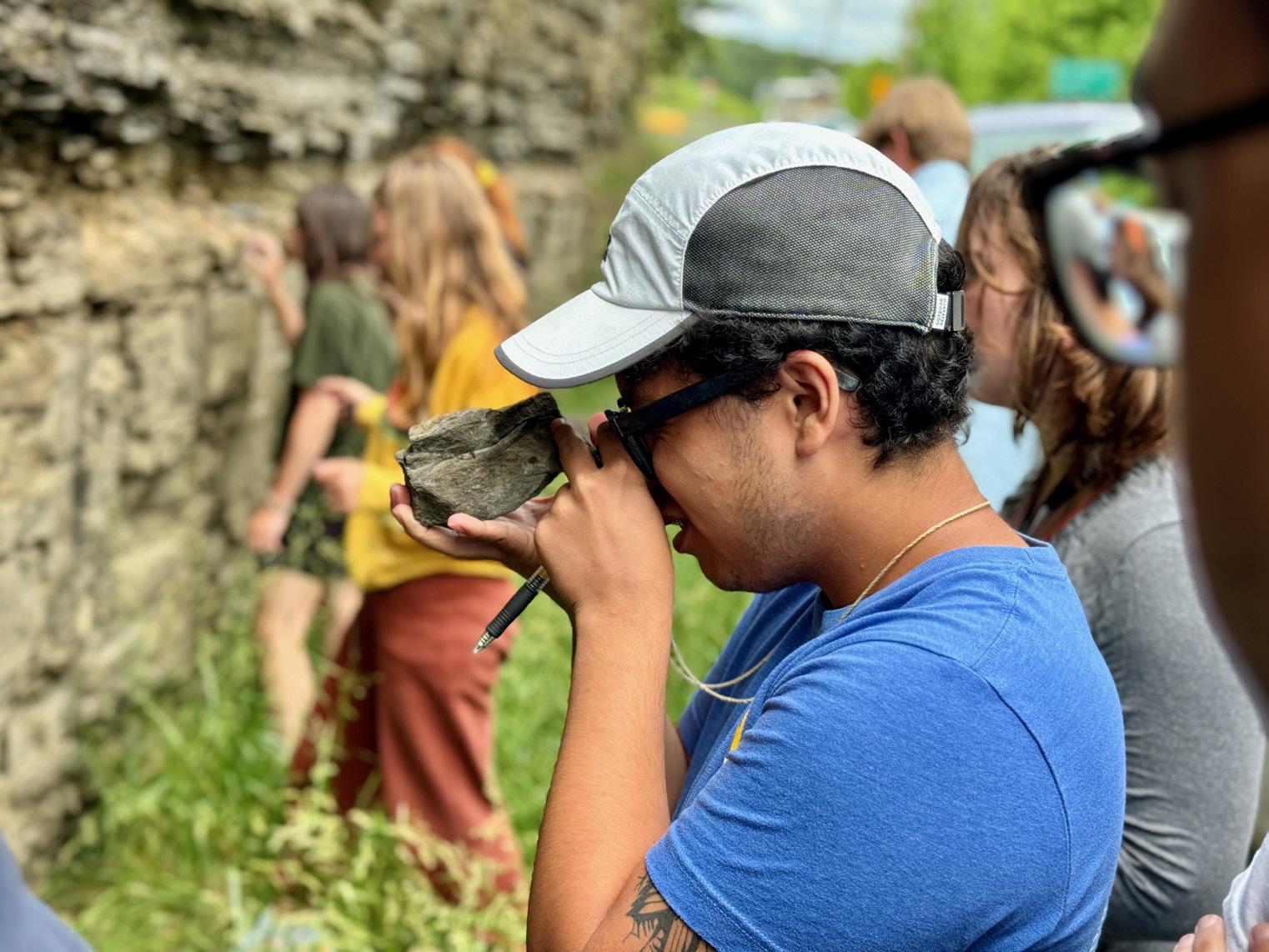
Arnaboldi agrees it’s important to continue offering the Florida trip.
“Getting students any and all kinds of field experience is so important,” Arnaboldi said. “The Florida trip has low barriers to access. It’s relatively cheap, it’s much less hiking-intensive than some other trips, and it’s easy camping. So from a practical standpoint, the trip can really help prepare students for field camp. I hope it keeps running forever.”
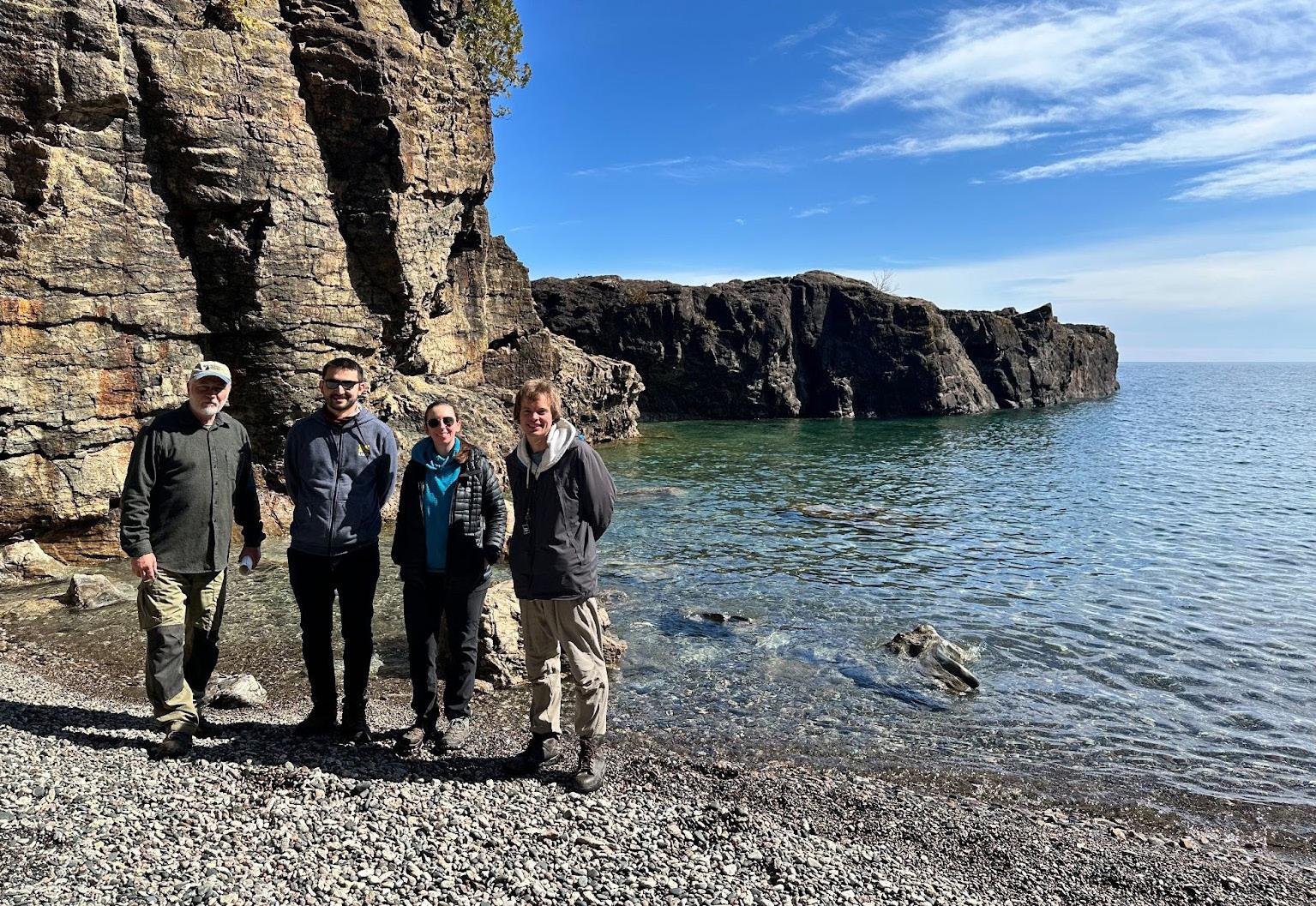
U-M's student chapter of the Society of Economic Geologists (SEG) embarked on a field trip to Michigan's Upper Peninsula in April 2024. Highlights included the Kona Dolomite stromatolites, 2.7 Ga pillow basalts on the shores of Lake Superior, Black Rocks ultramafic intrusion at Presque Isle Park, 1.8 Ga Negaunee banded iron formation at Jasper Knob, and exposures of the Copper Harbor Conglomerate along the Keweenaw Peninsula. The group also delved into the region's rich mining history with visits to the Michigan Iron Industry Museum, Back Forty VMS deposit core shed, Champion Mine tailings, and Quincy Mine. This trip offered a comprehensive overview of the geologic history and provided valuable insights into the past and future of mining in the Upper Peninsula. We extend our sincere thanks to SEG’s industry partner, Bob Mahin, for organizing and hosting EARTH students for this trip.
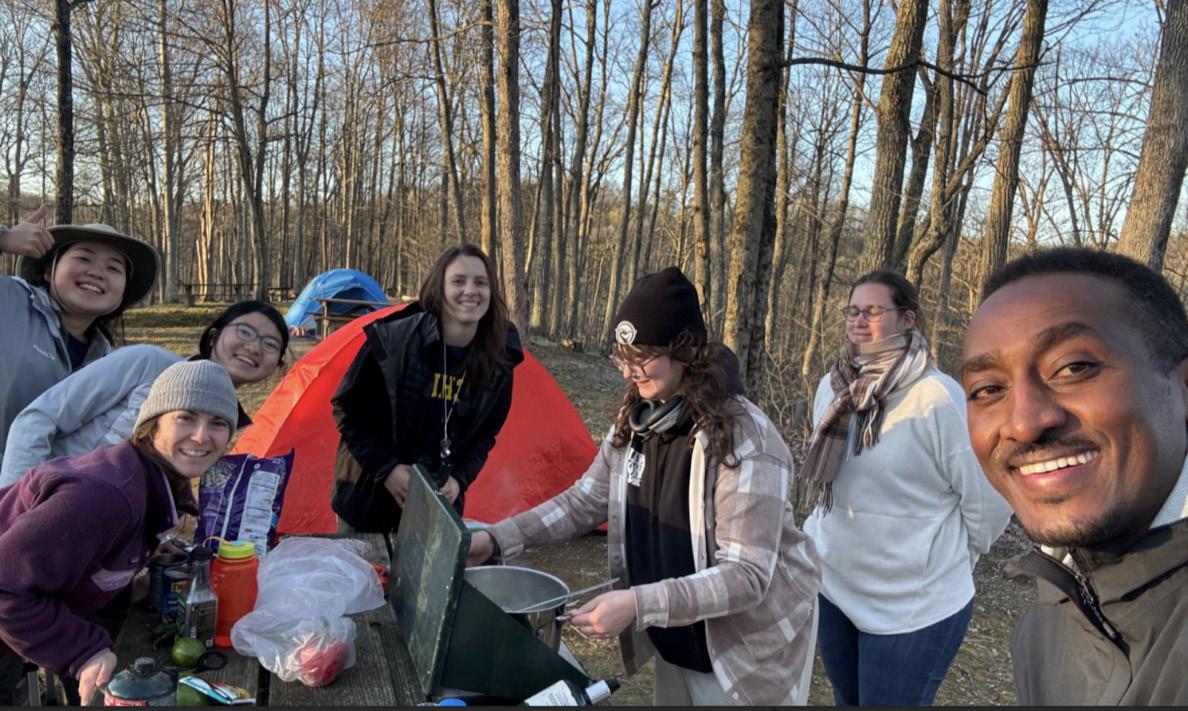

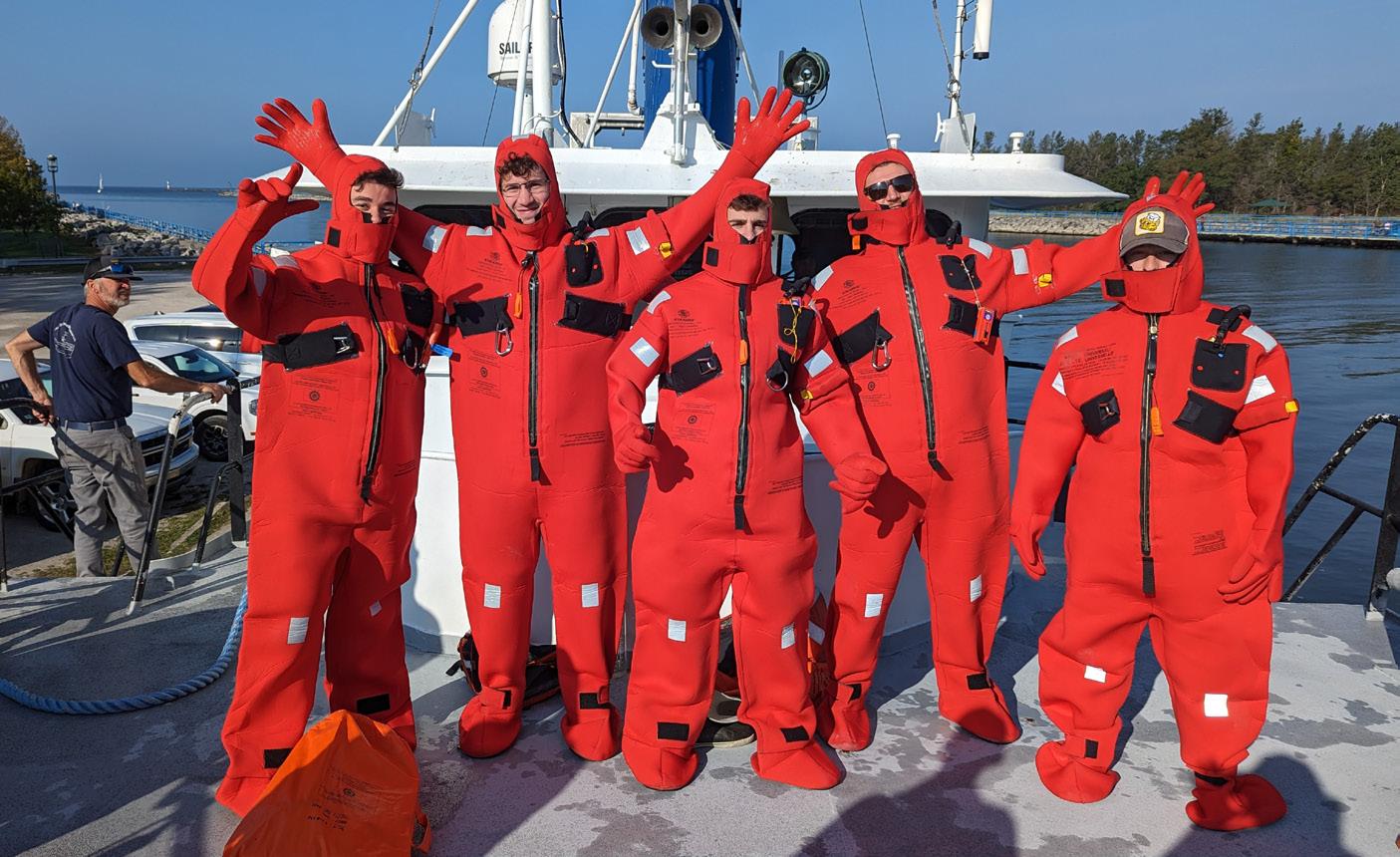
A group of graduate students, postdoctoral fellows, and professors organized an educational field trip to the Pennsylvanian-Permian Dunkard Group in southeast Ohio and West Virginia. The primary aim of the excursion was to enhance students’ skills in field stratigraphy and analysis of paleosols, with some efforts dedicated to identifying carbonate rock formations as well. Through these efforts, the team effectively honed their techniques in stratigraphy and paleosol identification. Along the way, they also indulged in gooey s’mores around a campfire. On their return leg to Ann Arbor, they stopped to admire the impressive crossbedding at Cuyahoga Valley National Park. Throughout their journey, they maintained high spirits by frequently listening to the classic song, “Take Me Home, Country Roads” by John Denver, among other crowd-pleasers. This blend of rigorous hands-on learning, natural wonders, and lighthearted camaraderie made the trip an unforgettable experience for everyone involved.
In Fall 2023, Professor Naomi Levin led students in EARTH 467: Stratigraphy and Basin Analysis on two field trips. From September 22-24, the class journeyed to western Ohio, exploring Ordovician and Silurian carbonate strata in the Dayton, OH, area. This trip provided students with a hands-on understanding of these ancient rock formations.
The second field trip, held October 7-8, took the group into West Virginia to study clastic sedimentary rocks. Highlights included examining deltaic sandstones at Hocking Hills State Park and the Permian paleosols of the Dunkard Group. These field trips offered invaluable realworld experience, enhancing students' comprehension of geological processes and stratigraphic analysis.
Last fall, Professor Brian Arbic took his physical oceanography students to Muskegon for a taste of ocean-going science on Lake Michigan. After overnighting on the USS Silversides—a WWII era submarine—they spent a day on the USS Laurentian, a NOAA research vessel. The unusually calm conditions allowed them to gain hands-on experience with oceanographic measurements and instrumentation. The class also met with NOAA staff to learn about Great Lakes oceanography and discuss NOAA careers.
Just like a bee, GeoClub was as busy as ever this past year. Our annual events again bookended the year with our Fall Picnic in September and the Spring Banquet in April. This past year’s banquet included improved entertainment with games featuring faculty photos, research-themed centerpieces, and skits acted out by faculty and students.
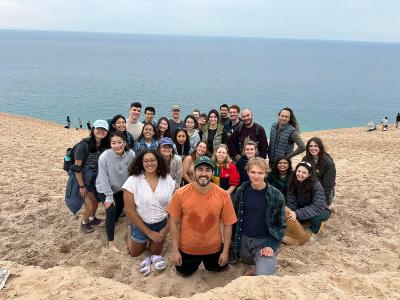
Other annual staples were the undergraduate camping trip and graduate student retreat. For the former, a group of undergraduates drove up to Tahquamenon Falls. They hiked from the lower to the upper falls, discussed aquatic geochemistry, and camped in Tahquamenon Falls State Park. For their part, the graduate students also headed north, to Sleeping Bear Dunes National Lakeshore. They stayed in a house on Crystal Lake and discussed ways they wanted the department to improve. The highlight of the trip was their time at the dunes, where many conquered the 450-foot dune climb.
We held two new events throughout the academic year. The first, EARTH Festivus, came in December. Department members gathered wearing festive attire to share donuts and apple cider and relax before finals. The second was International Students Week in February, which offered opportunities to learn from and show appreciation for our international students. The week culminated in a multicultural potluck with dishes representative of various homes and cultures. We look forward to their return of these events in the upcoming year.
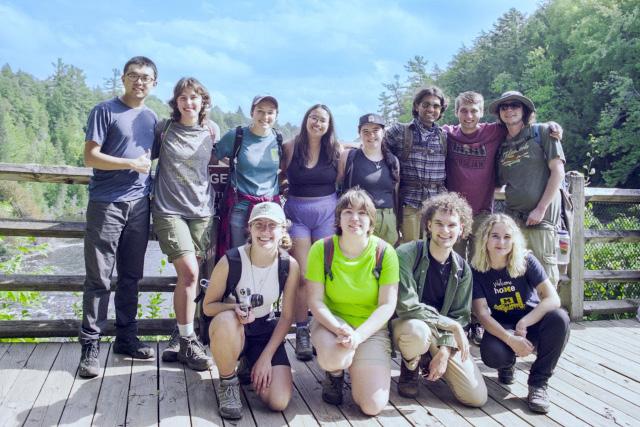
Other successes were our efforts in offering professional development opportunities for students. GeoClub ran workshops to help students develop skills in Microsoft Excel, coding, securing funding, writing abstracts, and preparing for conferences. We also organized a career panel in March with members from the Michigan Geological Survey, the National Oceanic and Atmospheric Administration, and the Detroit Salt Company. At monthly meetings, students practiced giving presentations on their experiences with research, fieldwork, or internships. Topics included the intersection of art and science, mineral collecting, Arctic fieldwork, and accessibility in STEM.
GeoClub is proud of all we achieved and were able to offer this past year. We are grateful to the department and our fantastic alumni for their support. We are looking forward to improving on the many gains from the year while discussing new opportunities for students academically, professionally, and socially.
Mack Taylor GeoClub President
Dear EARTH Community Members,
Our undergraduate and graduate programs continue a period of exciting growth and expansion, and we’re more energized than ever about the students we can reach, the skills we can share, and the scientists we’re sending out into the world!
On the undergraduate program curriculum front, we’ve created a new undergraduate minor, Geospatial Sciences, that formally organizes the courses we teach in this cross-cutting area to highlight the importance of geospatial systems thinking. The new minor prepares students for careers in urban planning, hazard management, resource management, and discovery, climate change adaptation and mitigation, and many other areas that increasingly rely on geospatial data and its analysis.
Our undergraduate program is thriving—we currently have almost 190 majors. We are delighted by this uptick in engagement with our program, the fruit of our continuing efforts to align our curriculum and research with targets we mapped in our 2021 strategic plan.
The size of section two of EARTH 450 at Camp Davis this summer—30 majors!—is emblematic of the challenges and opportunities of our increasing size. While accommodating 30 students, as well as GSIs and faculty instructors, meant logistical challenges for six vans, a packed dining hall, and last-minute adjustments to camping sites—it also presented an opportunity for the class to measure stream water flow and water quality in a greater number of stream locations than is normally possible. The summer 2024 students’ widespread measurements will serve as a baseline for comparison for the students in many subsequent summers of EARTH 450.
The graduate program continues to attract great applicants and produce excellent new researchers. This year we admitted a record grad cohort of 22, while ten students defended their PhD dissertations and ten students wrote MS theses. Our students are successful in the lab and in the classroom: Sydney Gable, Jiaqi Lu, and Alex Quizon won the inaugural Mark Robbins Innovative Teaching Award; Sydney Gable, Cecilia Howard, and Xue Su received the competitive, year-long Rackham Predoctoral Fellowship; and incoming student Abigail Reed wrote a successful proposal to the Graduate Research Fellowship Program of the NSF. Our students are also engaged in service. Worth highlighting is the work by Diana Velazquez as president of the U-M chapter of SACNAS and Jada Langston in helping create the Black Graduate Student Symposium. Their outreach efforts are important for diversifying Earth and environmental sciences and celebrating the work of our underrepresented students.
In the 2023-2024 academic year, we had 10 undergraduate students complete an honors thesis across departmental areas of research from paleoclimate to geophysics to water quality. Some of these theses will be submitted for peer-reviewed publication. The average GPA of these 10 honors thesis students was 3.9, well above the 3.5 minimum required to pursue honors research in EARTH. Please join us in applauding the stellar work of all our EARTH students!
Sincerely,
Rose Cory, Associate Chair for Curriculum and Undergraduate Studies Jeroen Ritsema, Associate Chair for Graduate Studies
Daniel Blakemore
Applications of Laser Ablation Inductively Coupled Plasma Mass Spectrometry to Problems in Mineral Resource Geology
Allison Curley
Applications of Carbonate Clumped Isotopes in Paleoclimate and Paleophysiology: Demystifying Biologically Driven Isotopic Fractionations in Class Bivalvia
Christopher Emproto
Isotope Geochemistry and Mineralogy Applied to Energy-Critical Mineral Deposit Geology
Fabian Hardy
Faunal Change, Paleoecology, and Landscape History in the Middle Miocene Dove Spring Formation, California
Sarah Katz
Andean Interglacial Climate and Hydrology Over the Last 650,000 Years
Meichen Liu
Insights on Earthquakes and Thermochemical Heterogeneity in Earth's Deep Interior: Generation and Propagation of Seismic Waves
Zachary Quirk
Investigating Leaf Adaptation and Evolution in Living and Fossil Non-Woody Monocot Flowering Plants
Olivia Walbert
Probabilistic Inference of Tensorial Stress in the Earth's Seismogenic Crust
Colleen Yancey
The Biosynthetic Repertoire of Microcystis spp. in Western Lake Erie Harmful Algal Blooms: Insights into Biosynthesis of Known and Novel Secondary Metabolites in Natural Populations using a `Multi-Omic' Approach
Jade Zhang
Paleoclimate and Hydrology of Bermuda from the Last Interglacial to Today Using Oxygen and Clumped Isotope Geochemistry
Justin Casaus
An Experimental Study of The Incorporation of Sulfur In Fluorapatite During Metasomatism
Paul Den Uyl II
Genetic Characterization of Saxitoxin Producing Cyanobacteria Associated with Western Lake Erie Harmful Algal Blooms
Madeleine Frank
Unusually Hydrous High-Mg Basanites and Minettes of the Kings River Volcanic Field, Sierra Nevada, CA
Kaitlin Koshurba
Braunite Synthesized Under Simulated Diagenetic Conditions: Implications for the Ancient Manganese Cycle
Nathan Laframboise
Controls on the Photochemical Production of Hydrogen Peroxide in Arctic Surface Waters
Michael Machesky
Refining Leaf Trait Methods for Paleoclimate Reconstruction
Kate Morrison
First Confirmed Occurrence of Nothofagus in the Cretaceous of Western North America
Leonardo van der Laat Munoz
Magma Fizz: Tremor During the Kīlauea Summit Reservoir Decompression
Dongyuan Zhou
Pyrolityc Glass and Melt in Magma Ocean Conditions: Unraveling Iron Disproportionation and its Implications for Redox Evolution in Rocky Planets
Siyang Zhou
Titanium Isotope Fractionation During Multicomponent Diffusion in Molten Basalts
Sheela Gowrisankaran
Distribution of Stresses on Subducting Slabs Informed by Deep Seismicity
Megan Keene
Trends in Nitrogen Uptake by Harmful Algal Bloom Assemblages in Lake Erie
Elizabeth Kusmierz
Investigating the Impacts of Growth Rate on Nitrogen Isotope Values in E. coli
Flora Luo
Coral-Based Reconstruction Reveals Connections Between Tropical North Atlantic Sea Surface Temperature Variability, ITCZ, and AMO
Ryan Lynch
Seasonal-Scale Paleoclimate Reconstruction of the Mid-Pliocene Warm Period Using HighResolution Stable Isotope, Trace Element, and Clumped-Isotope Analysis of Fossil Molluscan
Carbonate from the Yorktown Formation, Virginia
Eleanor Aro
Hannah Bartlett
Cassidy Beach
Benjamin Bos
Peter Brooks
Tyler Bush
Robert Butler
Paloma Calvin
Madelyn Chau
Sara Chojnowski
Griffin Clevenger
Benjamin Colding
Andrew Colon
Paige Csizmadia
Roman Damer-Daigle
Samantha Davies
Brandon Davis
Sophia Diloreto
Jenna Fei
Abigail Firsdon
Shannon Flores
Karoline Glamzi
Charlotte Goldstein
Sheela Gowrisankaran
Gillian Grobbel
April Harrison
Benjamin Johnson
Megan Keene
Elizabeth Kusmierz
Lucas Lapointe
Sydney Libbing
Darya Lollos
Flora Luo
Ryan Lynch
Emily McCarthy
Trinity Metcalf
Ivy Muench
Mac O’Brien
Isabel Peress
Jacob Peters
Kenneth Pontikes
Cody Quiroz
Megan Roe
Alanha Rudd
Sullivan Rudolph
Josh Salenbien
Anna Scheck
Caelan Schoenhofen
Sara Smith
Ryo Tomishima
Will Tschetter
Hadley Vande Vusse
Makayla Ward
Allan Zhao
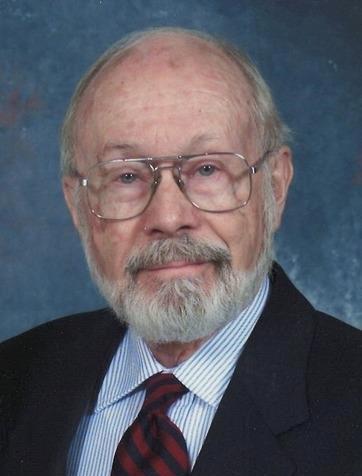
Charles Beck passed away on February 26, 2024, at the age of 96. Born on March 26, 1927, in Green Bay, Virginia, he graduated as his high school valedictorian and enlisted in the Army Specialized Training Reserve Program. After serving in the 63rd Anti-Aircraft Battalion in Japan at the close of WWII, he earned a BA in botany from the University of Richmond and a PhD from Cornell University. He then held a postdoctoral fellowship at the University of Glasgow.
In 1955, Beck joined U-M’s faculty, eventually becoming chair of the Department of Botany (now part of the Program in Biology) and holding other roles, including a professorship in the Department of Geology (now the Department of Earth and Environmental Sciences). His research focused on plant anatomy and paleobotany. Beck wrote a textbook titled An Introduction to Plant Structure and Development and received the Botanical Society of America's Merit Award in 2013 for his significant contributions to botanical sciences, including his groundbreaking discovery that the fern-like leaves of the genus Archaeopteris were in fact borne on a tree (Callixylon) with the anatomy of a gymnosperm.
Outside of his scientific achievements, Beck was passionate about gardening, photography, and classical music. He played the violin and sang in the choir at the First Baptist Church of Ann Arbor.

Rodney Ewing passed away on July 13, 2024, at age 77. Ewing was born on September 20, 1946, in Abilene, Texas. He received his BS from Texas Christian University in 1968 and his MS and PhD from Stanford University in 1972 and 1974. After serving as a faculty member at the University of New Mexico for over 20 years, Ewing joined U-M as a professor in what was then the Department of Geological Sciences, in 1997. Ewing served as chair of the department from 2005-2007 and was named Edward H. Kraus Distinguished University Professor in 2009. As chair, Ewing led a highly productive and visible research program, attracting students and scholars from diverse disciplines and different countries. He taught a famously rigorous version of a mineralogy course and took students to the western United States for inspiring field and cultural experiences. Ewing supported his colleagues and played an exemplary role in research, teaching, and service.
Ewing was a giant in mineral sciences, geochemistry, nuclear materials, and materials science and engineering, having published over 600 peer-reviewed papers on a wide range of topics, and even has a namesake mineral, Ewingite. He was very proud to have served as founding editor of the magazine Elements. Ewing received numerous awards for his outstanding research and public service, including being elected to the National Academy of Engineering. In 2014, Ewing was appointed by then-President Barack Obama to serve as chair of the Nuclear Waste Technical Review Board.
Rodney C. Ewing Collegiate Professor Jie Li reflects, "In 2023, Rod kindly granted my wish to name my collegiate professorship after him. What an honor to have known such an intellectual giant, a devoted teacher, a visionary leader, and a generous colleague. Rod will live on through his legacy and in our hearts!"
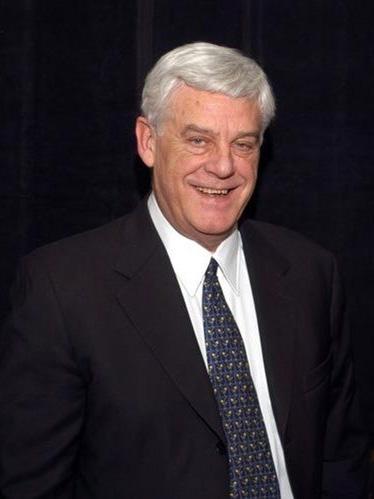
Rob van der Voo passed away on February 29, 2024, at the age of 83. Born on August 4, 1940, in the town of Zeist in The Netherlands, he attended Rijksuniversiteit Utrecht (now Utrecht University), earning a PhD in geology and geophysics in 1969. Van der Voo began his career at U-M in 1970 as an assistant professor in the then-Department of Geology and Mineralogy and quickly rose to prominence, earning a Russell Award in 1976 for his pioneering paleomagnetic research. Promoted to professor in 1979, he served the university for 36 years in various roles, including two terms as chair (19811988 and 1991-1995) and one as director of the Honors Program (1998-2003). Van der Voo received the Arthur F. Thurnau Professorship and the Frank H.T. Rhodes Collegiate Professorship in recognition of his exceptional achievements.
Van der Voo’s groundbreaking work on Paleozoic plate reconstructions became foundational in geology, and his extensive publications solidified his status as a world leader in paleomagnetism. In 2001, he received the Benjamin Franklin Medal in Earth Science from the Franklin Institute and was elected to the Royal Academy of Sciences, the Netherlands, and the Royal Norwegian Society of Sciences and Letters.
Van der Voo valued mentorship and the success of his students and collaborators, and he dedicated himself to building a vibrant scientific community. His legacy carries on through his influential research, dedicated mentorship, and the strong relationships he fostered within the academic community. He continues to be honored in our department through the annual Rob van der Voo Lecture.
As experts in their respective fields, our department members are often sought out by the media for insights on topics related to Earth and environmental sciences. While we don’t have the space to include each piece that featured EARTH faculty and students, a few are below. We encourage you to seek out all of the full articles online.
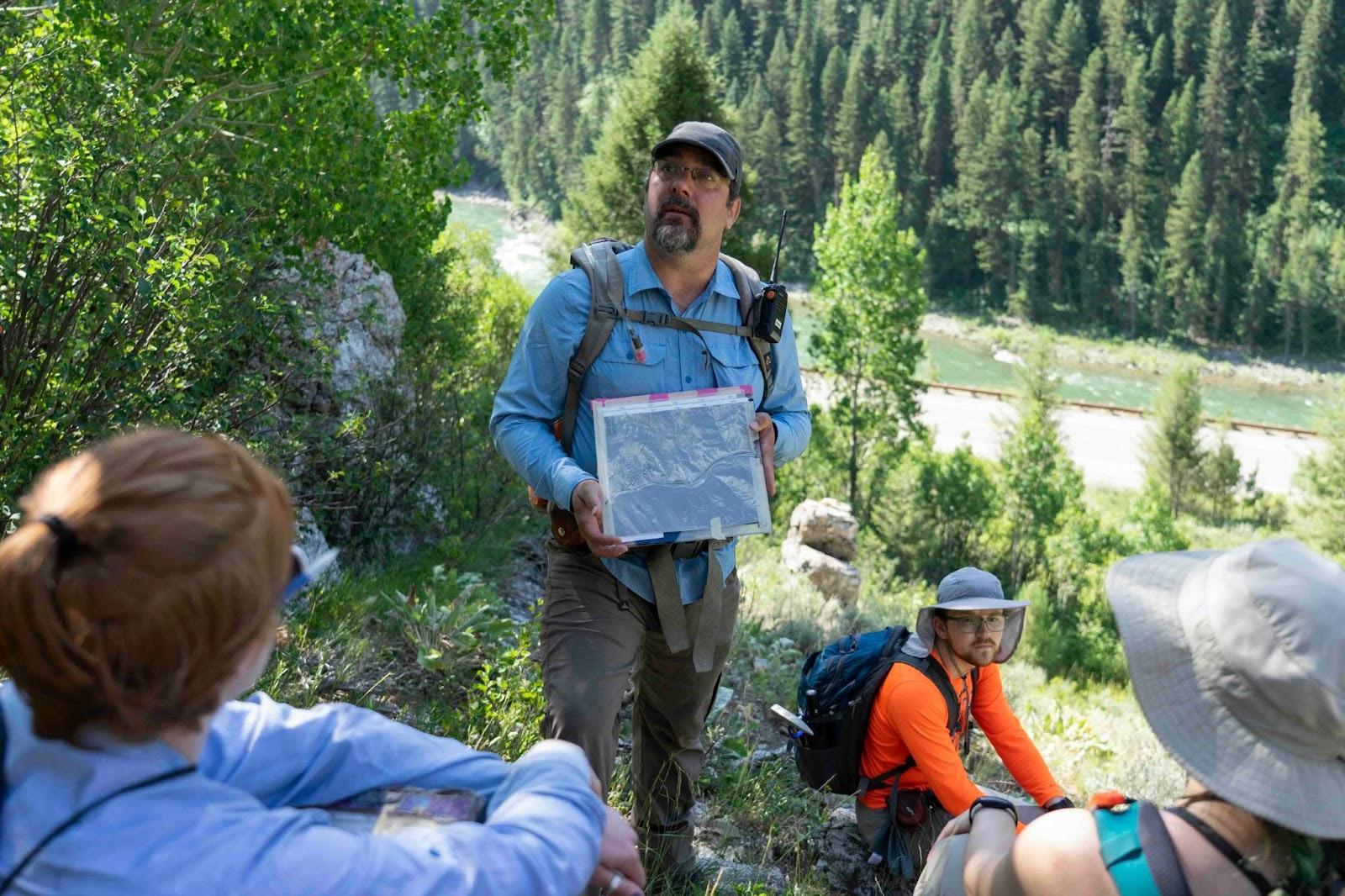
Nathan Niemi, Cool Science Radio, KPCW Radio
Professor Nathan Niemi discussed Camp Davis and other geology field camps on KPCW's Cool Science Radio, explaining their purpose and structure each summer. He highlighted that Camp Davis’ location—Wyoming—offers U-M students the chance to study diverse geology that is not present in southeast Michigan. Camp Davis’ strategic location allows students to take trips to places like the Uinta Mountains, where they examine billion-year-old ice-covered rock formations and limestone from ancient shallow seas. Field trips like these with short travel times from camp provide exposure to diverse geologic and ecologic contexts, encouraging students to consider various geological processes.
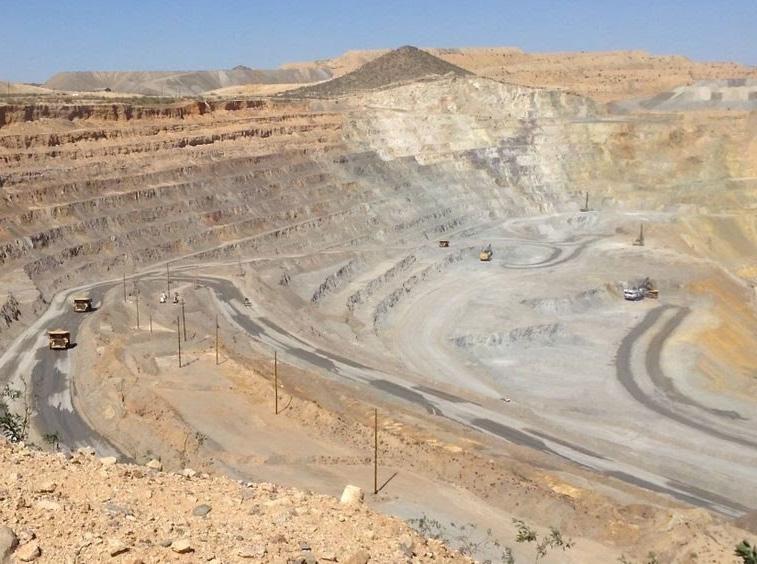
Adam Simon, Copper Can’t be Mined Fast Enough to Electrify the US, Michigan
Professor Adam Simon spoke with Michigan News about the United States’ renewable energy transition, highlighting copper production challenges. A report co-authored by Simon suggests copper demand, spurred by the 2022 Inflation Reduction Act, outstrips current and future mining capabilities. Meeting this need would require rapidly opening new mines, a process complicated by lengthy wait times for permits. The report calls for policy shifts to align resource allocation with realistic mining capacities. Simon emphasizes the importance of recognizing copper as a limiting factor and considering alternative strategies, like focusing on hybrid vehicles instead of fully electric ones.
Originated in the New World
60 Million Years Ago, Michigan News
Assistant Professor Mónica Carvalho and her team discovered fossilized seeds of nine grape species, dating back 20-60 million years, in Panama, Colombia, and Peru. Published in Nature Plants, the research highlights the ancient lineage of grapes used in modern viticulture. The oldest seed, related to the Vitoideae subfamily of commercial grapes, thrived and diversified in neotropical rainforests following the Cretaceous extinction. This discovery enhances the understanding of grape history, particularly in the tropics, by closing a gap in the fossil record and revealing the existence and spread of grapes long before the extinction event.

A team of U-M engineering students installed solar panels at a rural school in Boca do Mamirauá, Alvarães, Brazil. Founded by graduate student Ethan Shirley, the initiative provides sustainable energy, eliminating the school's reliance on a nighttime generator. The solar panels power fans, lights, and a water fountain, addressing high temperatures and lack of cold water that previously forced early school dismissal, cutting into hours otherwise spent learning. Through the Pantanal Partnership, a U-M student club, this project offers practical engineering experience. The initiative has been active for over a decade in the Pantanal region.

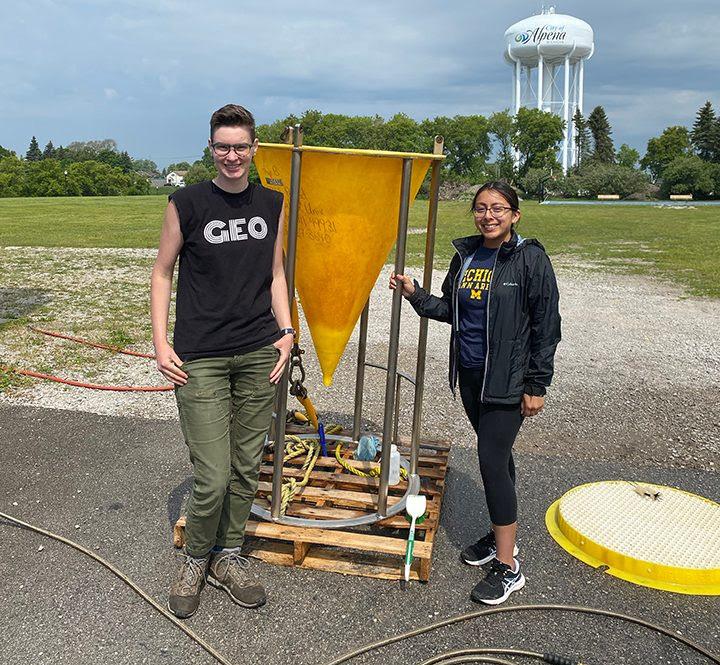
PhD candidates Cecilia Howard and Diana Velazquez collected underwater sinkhole samples in the Thunder Bay National Marine Sanctuary in Alpena, MI, for long-term studies on low-oxygen conditions. Using sediment traps, they gathered particulate matter to analyze the nutrient cycling of essential elements like carbon and nitrogen in the Middle Island Sinkhole. The traps, deployed over winter and redeployed in October, collected sediment samples for analysis. Their research aims to understand how low-oxygen environments affect nutrient sources and preservation in the sinkhole sediments.
• John Adams
• Marwah Al Ismail
• Barbara Allan
• Allyson and Scott Tinker Charitable Fund
• Anna C. Mastroianni & Gregory M. Shaw Fund
• Anonymous
• Michela Arnaboldi
• Amanda Balogh
• Carli Balogh
• Udo Becker
• Will Bender
• Emily Bertolini
• Laura Bilenker
• Robert Blair
• Jessica Bleha
• Joel Blum
• Charles Boos
• Emily Boswell
• Karen Boven
• John Bowman
• Richard Braslow
• Thomas Brocher
• James Brophy
• David Brosnahan
• Erika Carter
• Christopher Chong
• Sally Churchill
• Bruce Clark
• Denzel Cline
• Christine Cole
• Julia Cole and Jonathan Overpeck
• Rose Cory
• David Cowan
• Maria Cruz Da Silva Castro
• Jennifer Cummings
• Bonnie Curran
• Deborah Dancik
• Amanda Dasch
• Lawrence Davis
• David DeWitt
• John DeYoung
• Gregory Dick
• Kathe Dillman
• Darius Dixon
• Kelsey Dyez
• John Encarnacion
• Ruth Engel
• Daniel Fisher
• Karen Flores
• Thomas Flynn
• Heather Foote
• Sally Foster
• David Fountain
• Cynthia French
• John Geissman
• Molly Geissman
• James Gleason
• Teddy Grabowski
• Edward Graham
• Henry Gray
• Chad Gregory
• Sharon Grim
• Kenneth Grubbs
• Helen Harding
• Leslie Hartig
• Franciszek Hasiuk
• Carl Henderson
• Joseph Henley
• Douglas Henry
• Steven Henry
• James Hnat
• Diane Hoerner
• Angela Homan
• Cyrus Hopkins
• Robert Hotaling
• Thomas Hutchinson
• Benjamin Johnson
• Emma Johnson
• Haig Kasabach
• Sarah Katz
• Mark Kazelskis
• Kate Keller
• Jenan Kharbush
• Heather Kirkpatrick
• Robert Klein
• Anne Klejna
• Gregory Krach
• Anne LaFond
• Chester Langway
• Elena Lee
• David Levine
• Ruomei Li
• Kyger Lohmann
• Tania Lopez
• Annette Lyle
• Kevin Mackey
• Jessica Malone
• Jeff Mauk
• Martha McClatchey
• The McClish Family Fund
• Karr McCurdy
• Jill McMahon
• Cynthia Mead
• Tamatha Meek
• Joseph Meert
• Fredrick Metzger
• Mary Meunier
• Kyle Meyer
• David Mogk
• Eva Moldovanyi
• Elizabeth Morand
• Mr. and Mrs. Donald L. Sprague Fund
• Cary Mrozowski
• Daniel Newman
• Tina Nielsen
• Nathan Niemi
• Susan Owen
• Benjamin Passey
• Dexter Perkins
• Sierra Petersen
• John Pfefferle
• Pioneer Valley Dental Arts
• Christopher Poulsen
• Blake Pradko
• Joan Price
• Glenda Renwick
• Karee Rhoades
• Mary Rising
• Charles Ritter
• Helene Robbins
• Robert Rosowski
• Larry Ruff
• Lydia Sandefur
• Emily Schottenfels
• Nathan Sheldon
• Gary Sidder
• Nancy Smith
• Brett Sosnik
• Andrea Stancin
• C. Gary Sydow
• Anne Tansantisuk
• Thomas Thomas
• Barbara Tougias
• Adrianna Trusiak
• Hiroshi Tsuji
• Michelle Wagner
• Daming Wang
• Matthew Wasson
• Richard Whiting
• Daniel Wiitala
• Martha Willis
• Jeffrey Wilson
• Kim Winchell
• Jeffrey Wojcik
• David Woodmansee
• Xiqiao Xu
• Yiruo Xu
• Jefferson Yarce
• Kenneth Yuan
• William Zempolich
• Youxue Zhang
• The Zhou Family Fund
Additionally, we are grateful for the corporate matching gifts we have received from Barr Engineering Co., Chevron Corporation, ConocoPhillips Company, Exxon Mobil Foundation, Google Foundation, Lecturers' Employee Organization, Microsoft Corporation, and Shell Oil Company Foundation
Department of Earth and Environmental Sciences
University of Michigan
2534 North University Building
1100 North University Avenue
Ann Arbor, MI 48109-1005
Address Service Requested